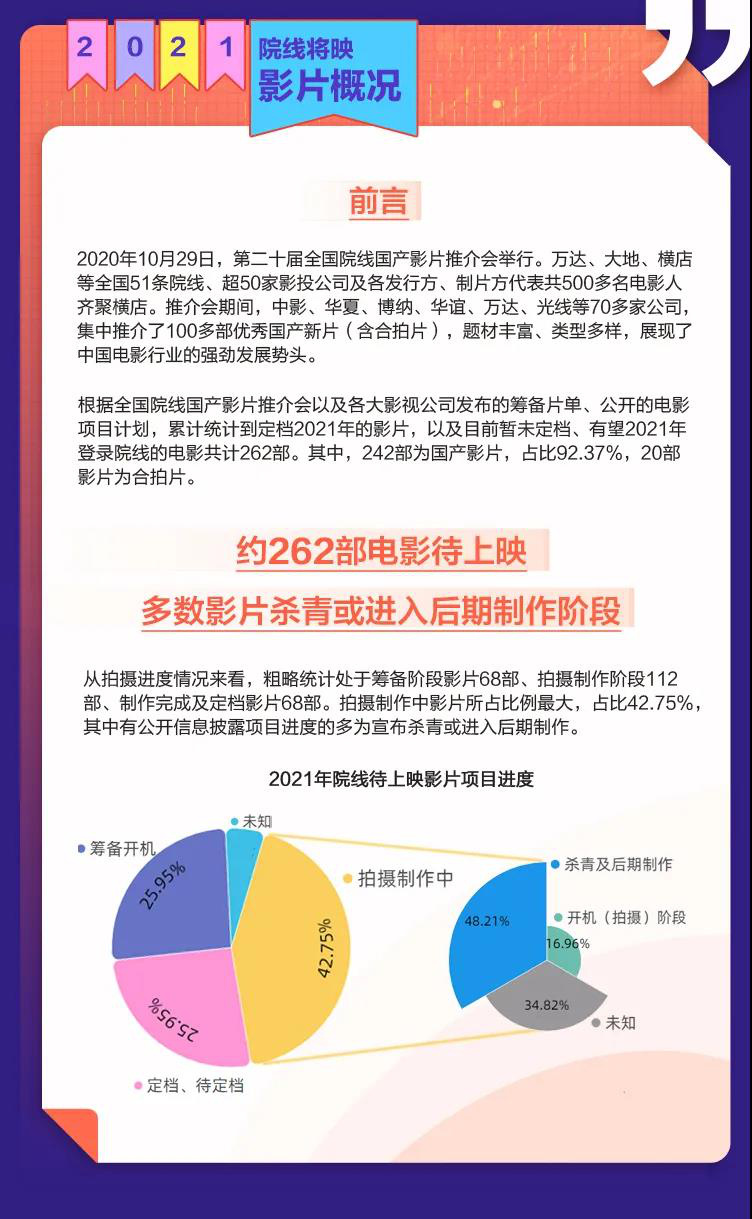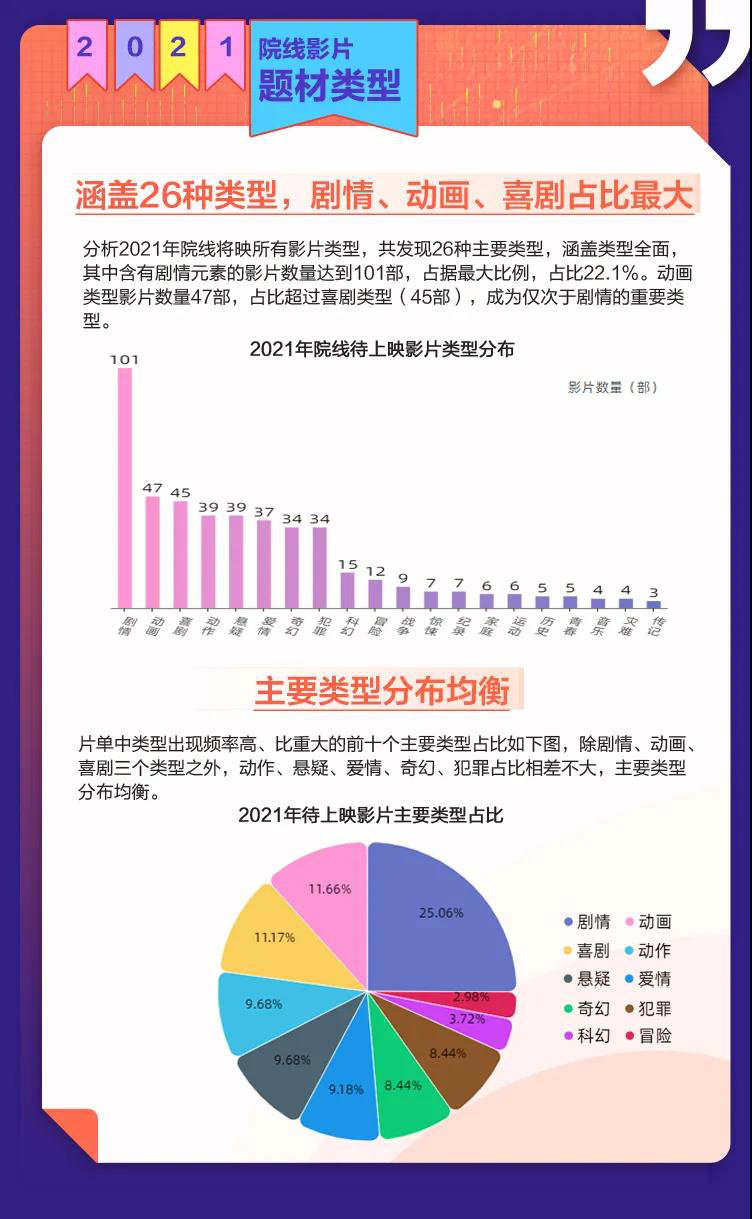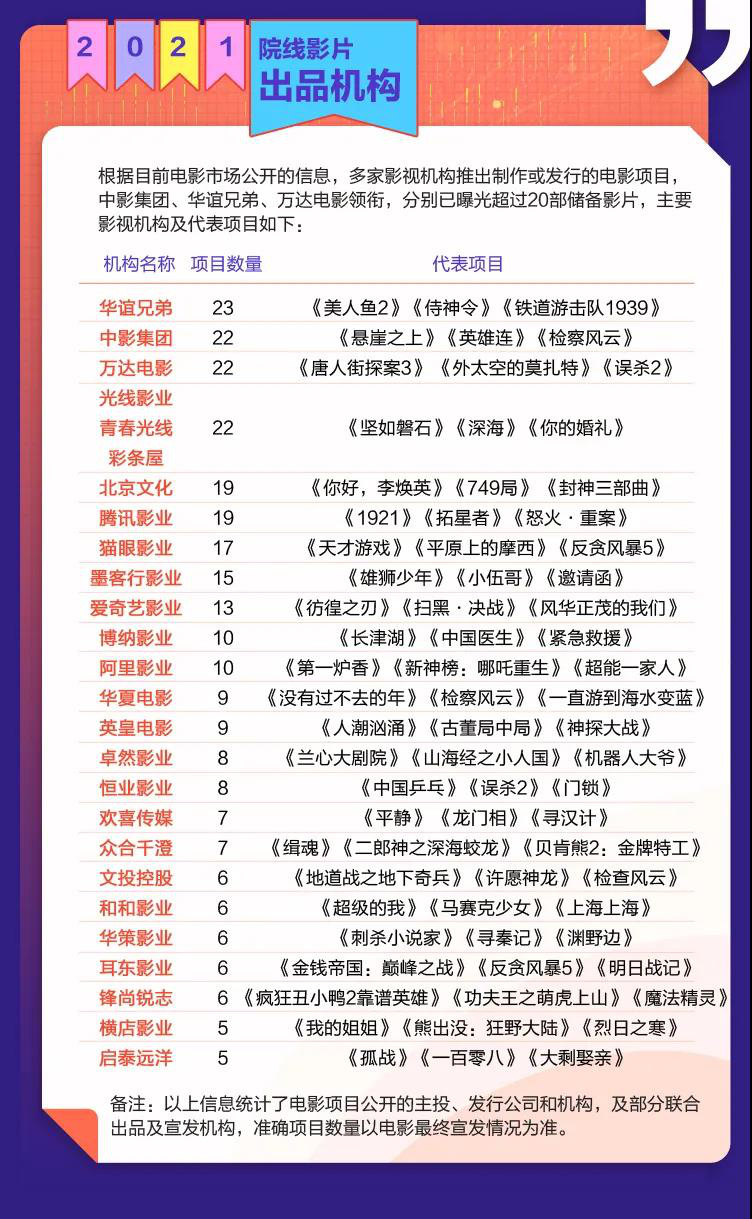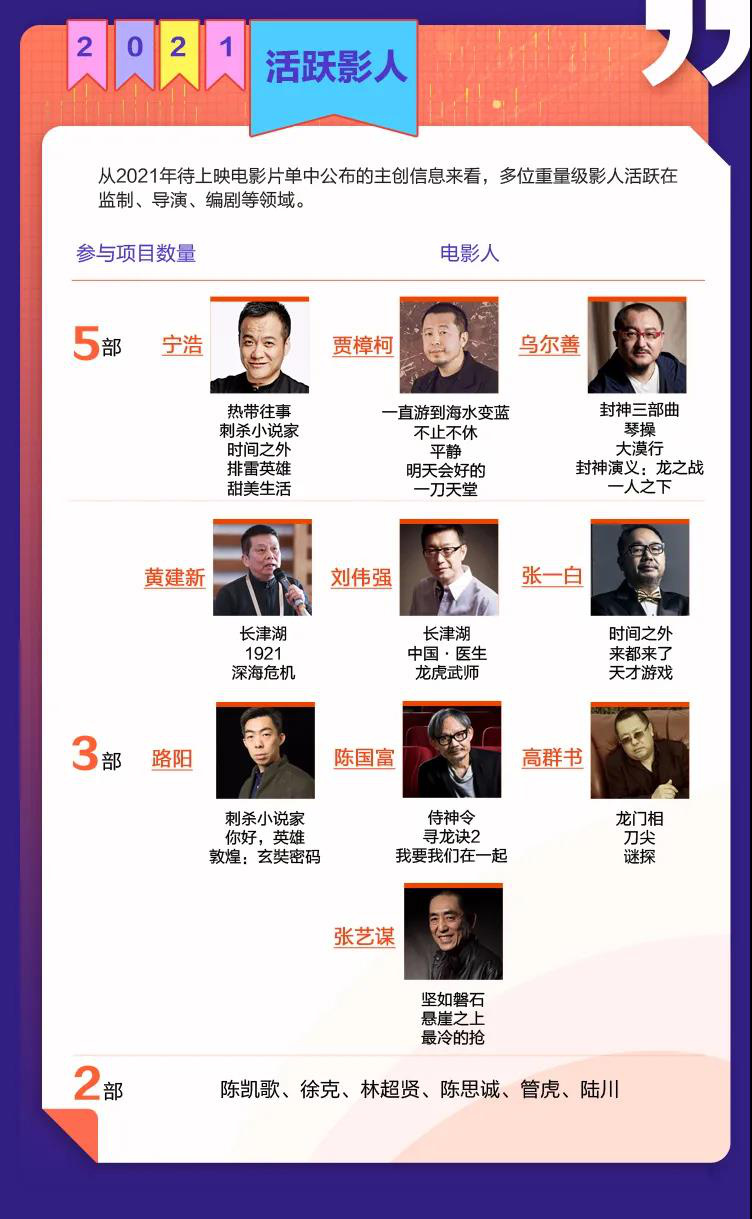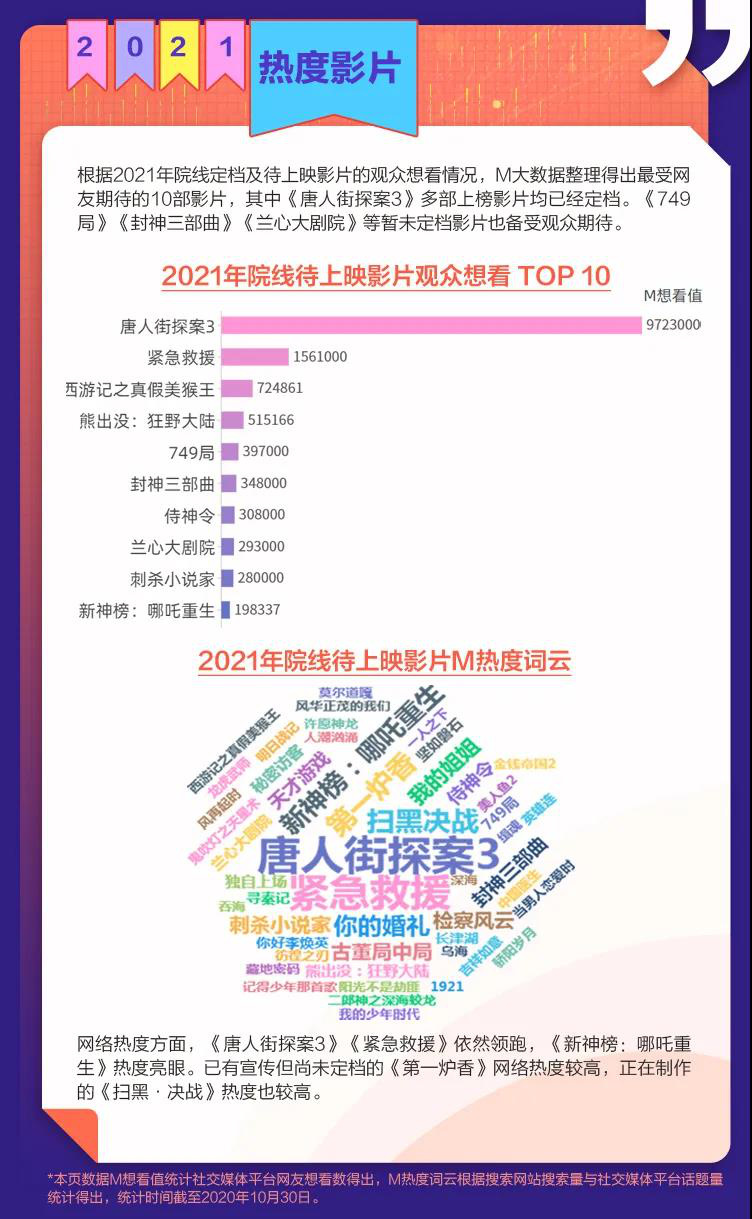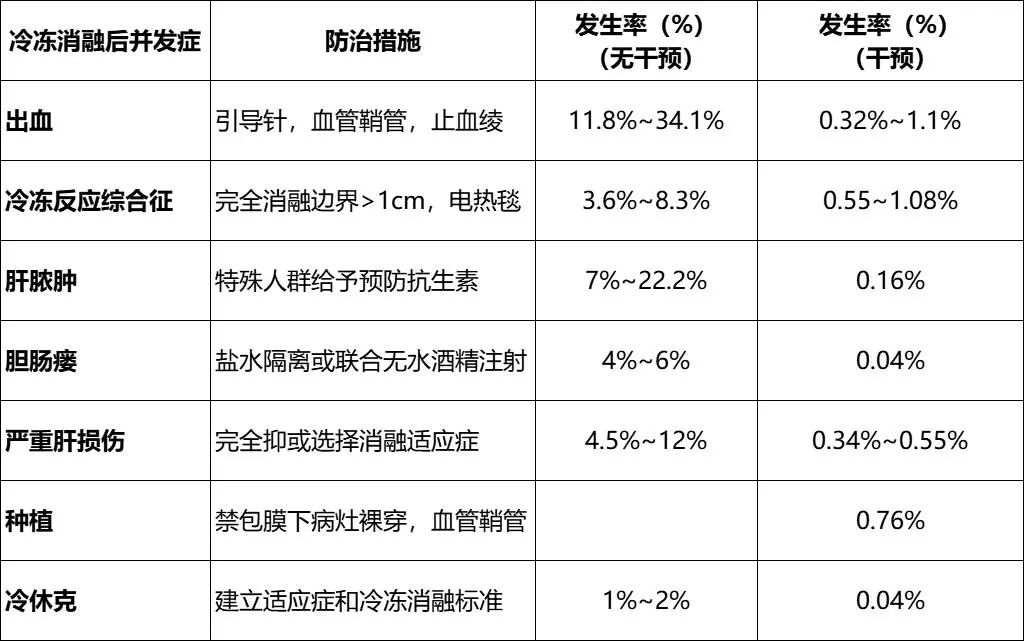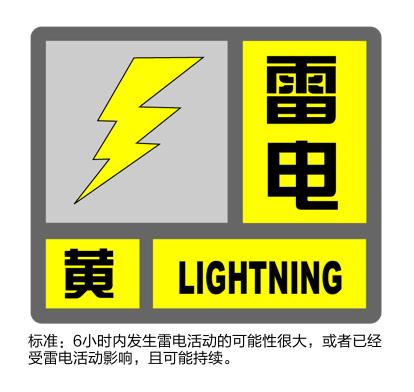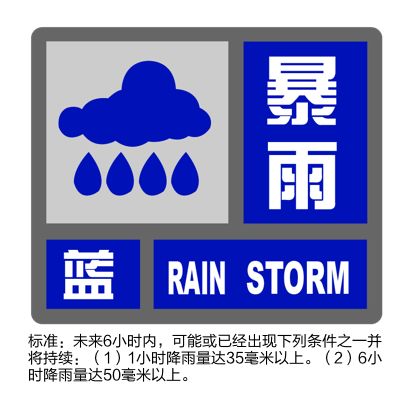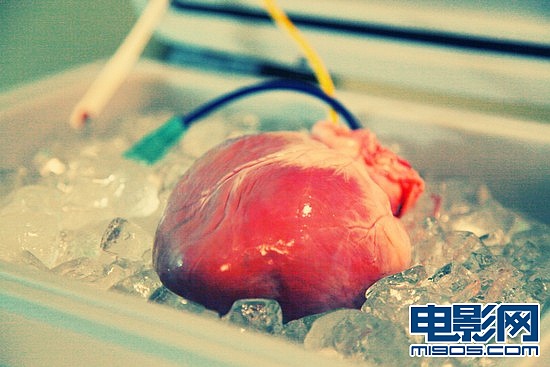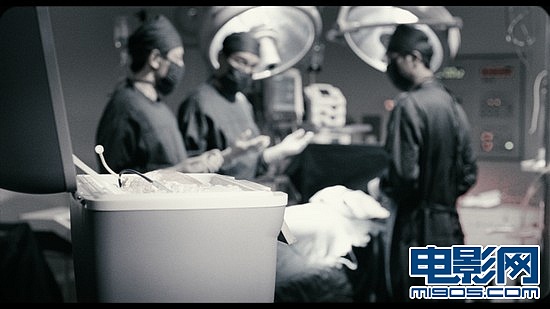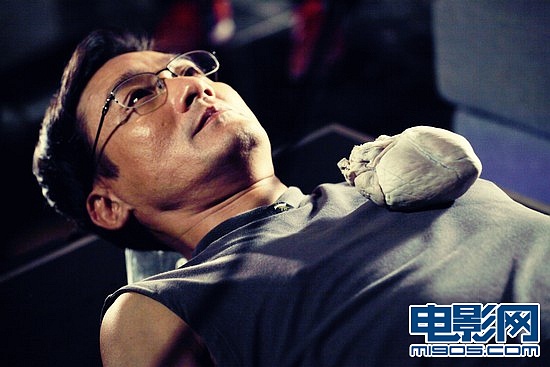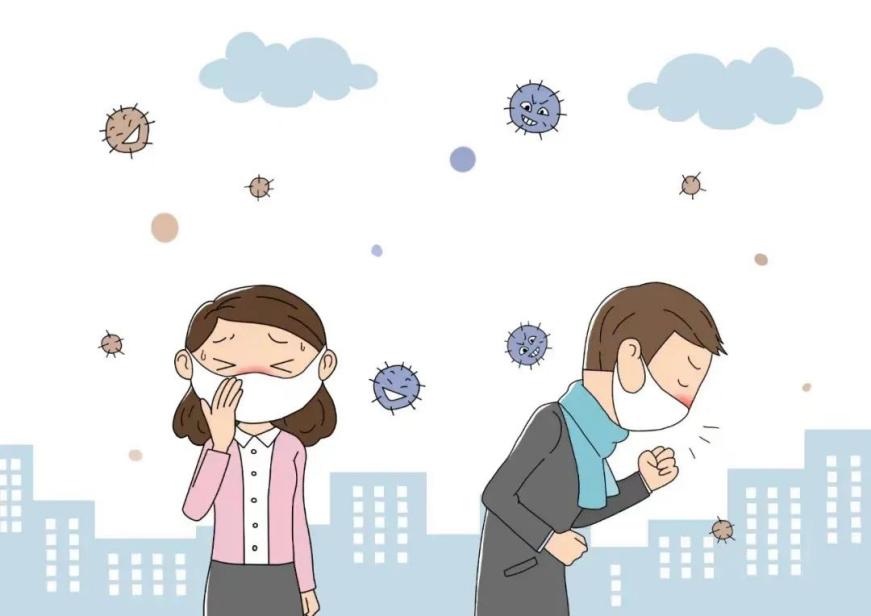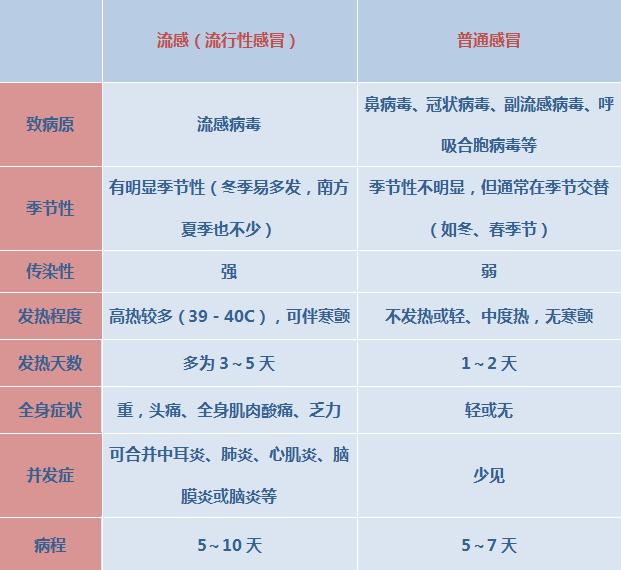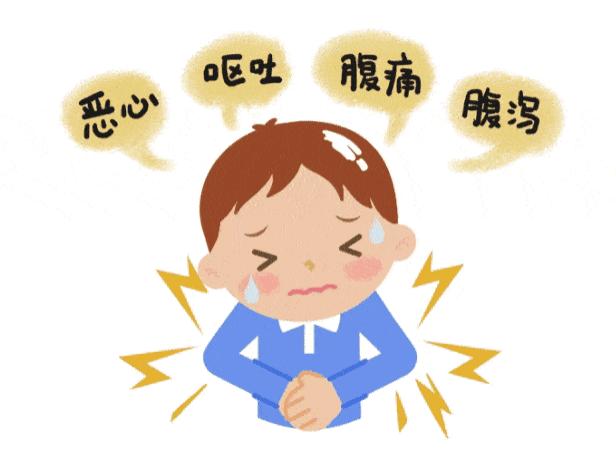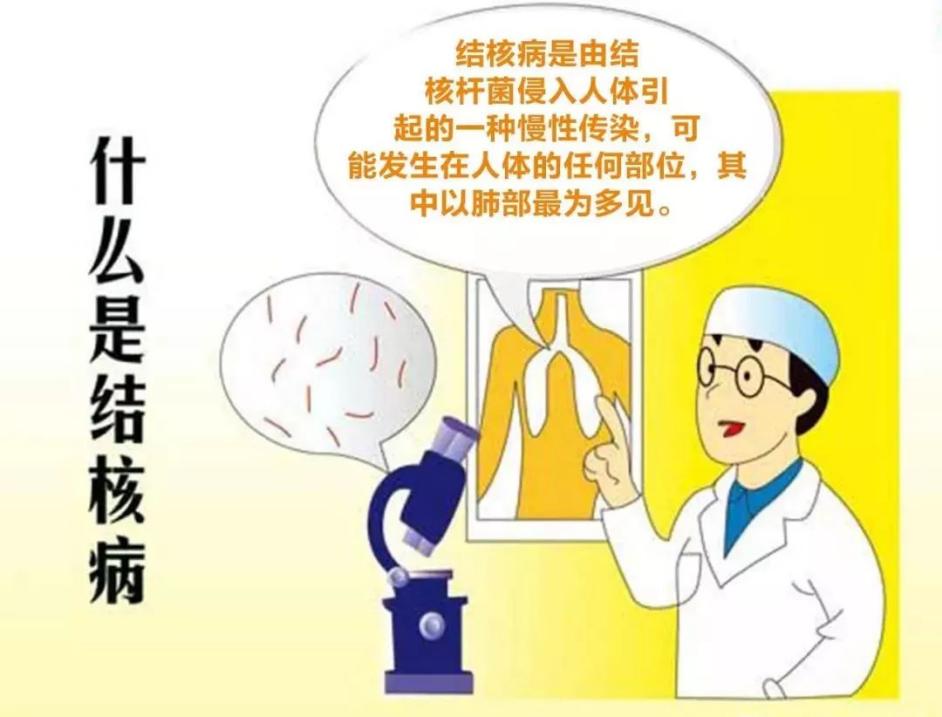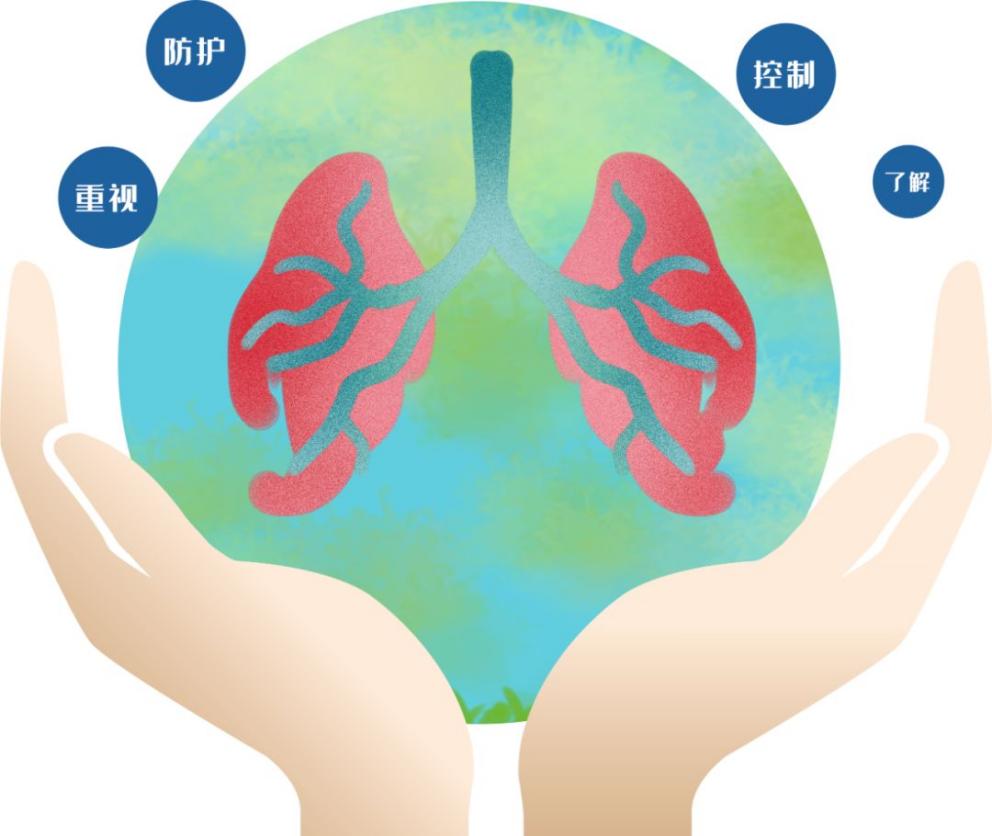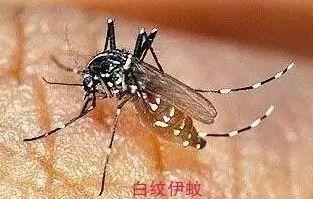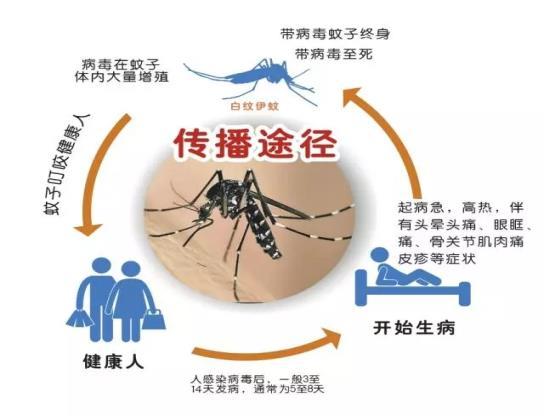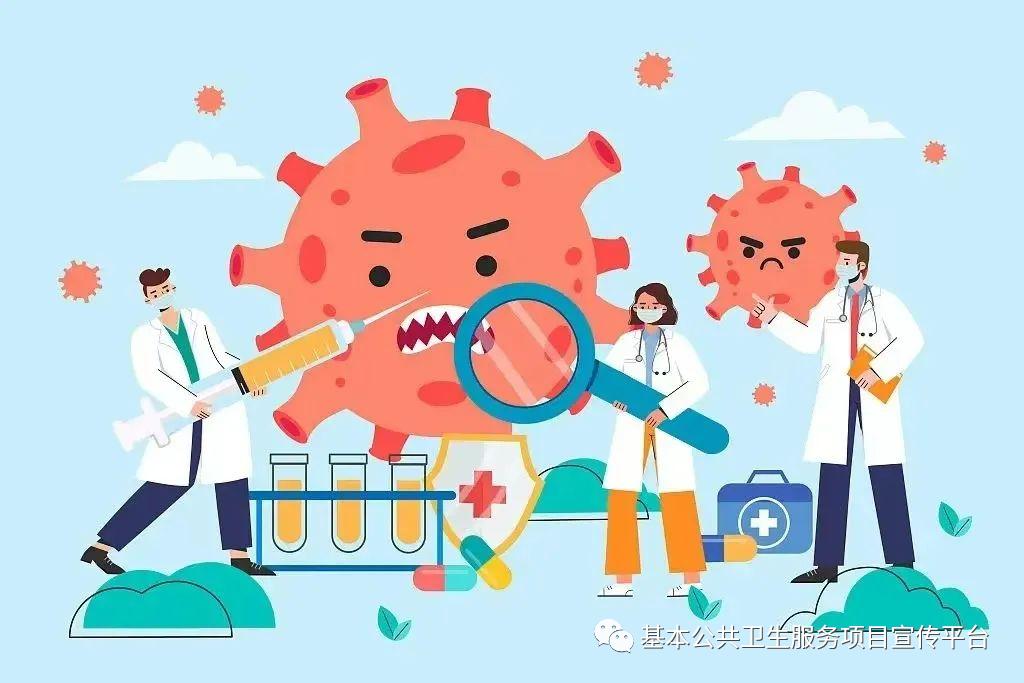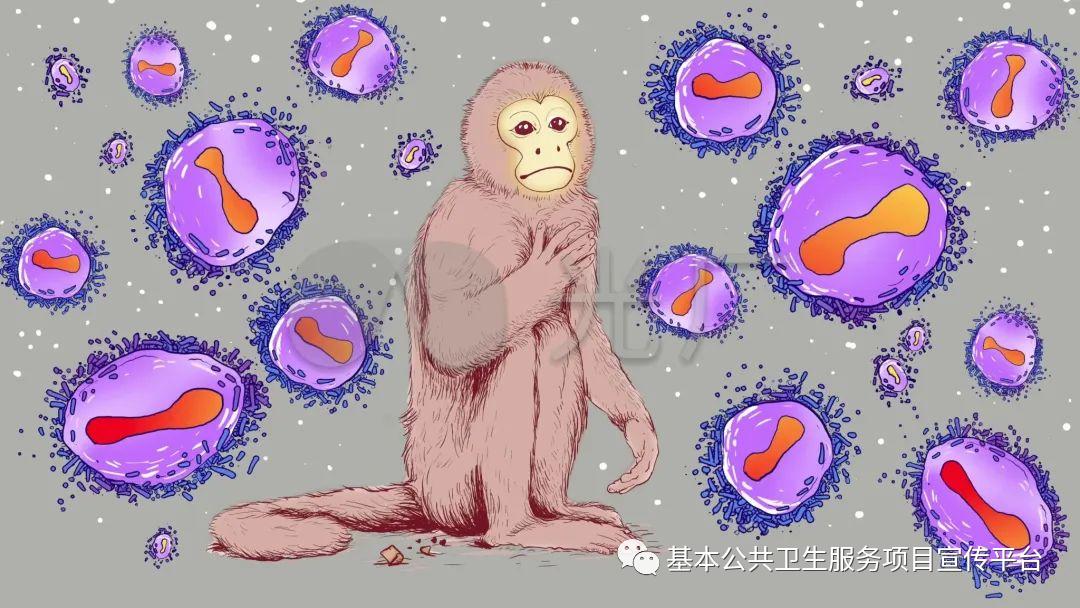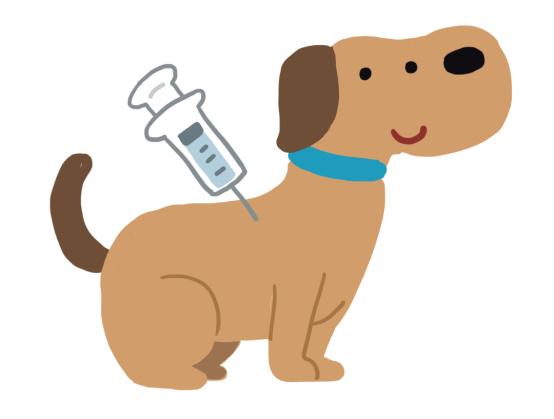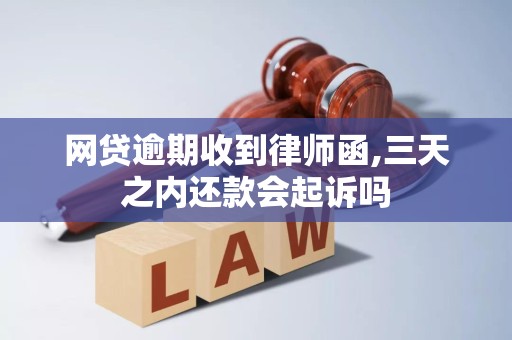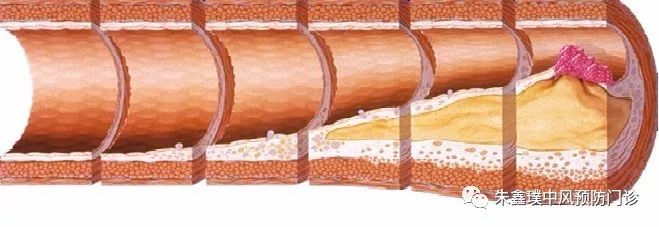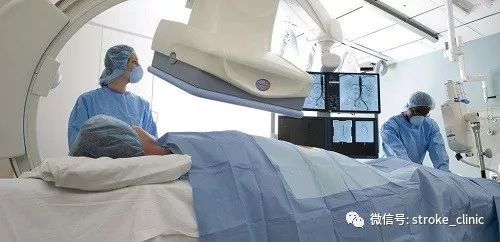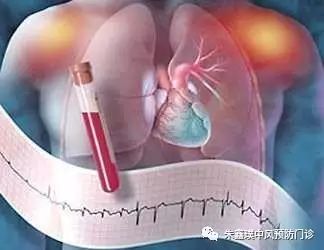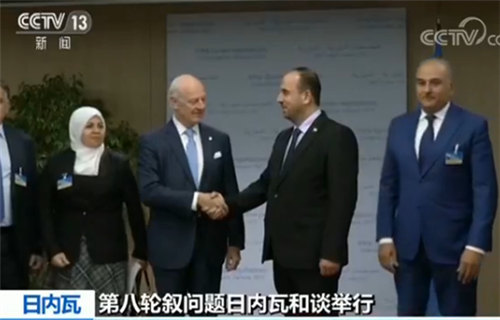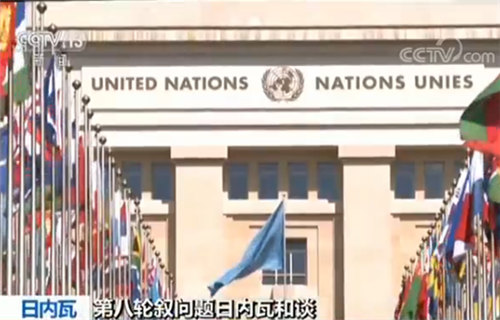Hang Zheng [2020] No.56
District and county (city) people’s governments, municipal government departments and directly affiliated units:
The measures for the basic medical security in Hangzhou are hereby printed and distributed to you, please follow them carefully.
Hangzhou Municipal People’s Government
December 31, 2020
Measures of Hangzhou Municipality on Basic Medical Security
Chapter I General Provisions
the first In order to further improve and perfect the basic medical security system in our city and safeguard the rights and interests of the insured, these measures are formulated according to the opinions and requirements of the Social Insurance Law of People’s Republic of China (PRC), the Regulations on Social Assistance in Zhejiang Province, and the national and provincial opinions and requirements on deepening the reform of the medical security system, combined with the actual situation in our city.
the second The basic medical security system adheres to the principles of universal coverage, overall planning of urban and rural areas, clear rights and responsibilities, fairness and moderation, multi-level sustainability, combination of fairness and efficiency, corresponding rights and obligations, and matching the level of security with the level of economic development.
Article Establish and improve a multi-level medical security system with basic medical insurance as the main body, serious illness insurance as the extension, medical assistance as the foundation, supplementary medical insurance, commercial health insurance and other common development. Specifically, it includes basic medical insurance for employees (hereinafter referred to as employee medical insurance), basic medical insurance for urban and rural residents (hereinafter referred to as urban and rural medical insurance), serious illness insurance and medical assistance system.
Article 4 These Measures shall apply to all employers and their employees, urban and rural residents, designated medical institutions for basic medical insurance, designated retail pharmacies (hereinafter referred to as designated medical institutions) and their regulatory agencies within the administrative area of Hangzhou.
Article 5 Hangzhou City [including Shangcheng District, Xiacheng District, Jianggan District, Gongshu District, Xihu District, Hangzhou High-tech Development Zone (Binjiang), Xiaoshan District, Yuhang District, Fuyang District, Lin ‘an District, Hangzhou Qiantang New District and Hangzhou West Lake Scenic Area], Tonglu County, Chun ‘an County and jiande city are respectively regarded as independent medical security management jurisdictions (hereinafter referred to as jurisdictions).
Article 6 People’s governments at all levels should incorporate medical security into the national economic and social development plan, implement laws, regulations, rules and policies on medical security, and provide organizational and financial support for medical security.
Article 7 The municipal medical security administrative department is in charge of the city’s basic medical security work. District and county (city) medical security administrative departments are responsible for the local basic medical security work, and medical security agencies at all levels (hereinafter referred to as medical insurance agencies) are responsible for the specific implementation.
Development and reform, economic and information, human resources and social security, agriculture and rural areas, health, civil affairs, finance, taxation, market supervision, education, auditing, public security, trade unions, disabled persons’ federations, veterans affairs, data resource management, statistics, women’s federations and other departments and units are responsible for medical security services and supervision and management within their respective functions and duties.
Article 8 In accordance with the principle of "policy, management, service, information and supervision", we will gradually implement the municipal overall planning of basic medical insurance. The city’s basic medical insurance fund shall be collected and accounted independently by each jurisdiction, and combined with the adjustment of management system, the city’s basic medical insurance fund shall be gradually realized.
Article 9 Each jurisdiction may, according to the local economic development level and the actual medical security, formulate regulations on medical treatment management in this jurisdiction in accordance with the requirements of county medical community construction and graded diagnosis and treatment.
Article 10 Establish and improve the social supervision organization of medical security, which is attended by representatives of government departments, insured persons, employers, trade unions and experts, analyze and master the operation of the medical security system, provide advice and suggestions on medical security work, and implement social supervision.
Chapter II Medical Insurance for Employees
Article 11 The following personnel within the administrative area of this Municipality shall participate in employee medical insurance within their respective jurisdictions:
(1) Employees of state organs, institutions, social organizations, various enterprises, private non-enterprises and individual industrial and commercial households (hereinafter referred to as employers) (including employers and employees, the same below);
(two) according to the relevant provisions of the one-time agreement to pay the basic medical insurance premium (hereinafter referred to as the co payment personnel);
(three) according to the provisions of these measures to enjoy the medical insurance retirement benefits of employees (hereinafter referred to as retirees);
(four) other personnel as prescribed by the state, province and city.
Article 12 Within the working age, the following urban and rural residents who are not employed by the employer can participate in the medical insurance for employees in this Municipality as flexible employees:
(a) the city’s household registration personnel can participate in the medical insurance for employees in the jurisdiction where the household registration belongs.
(2) Persons who are not registered in this Municipality, have terminated or terminated their labor relations with the employing unit, and the actual payment period of medical insurance for employees in this Municipality has accumulated for 10 years, and may participate in medical insurance for employees in their respective jurisdictions as required.
(three) other personnel as prescribed by the state, province and city.
Article 13 The employee medical insurance fee shall be paid by the employer and individual according to the following provisions:
(1) The employer takes the total wages of employees in the current month as the payment base (hereinafter referred to as the unit payment base), and pays the employee medical insurance (including maternity insurance) fee on a monthly basis, with the payment ratio of 9.9% (including the maternity insurance payment ratio of 0.4%).
When calculating the unit payment base, if the monthly salary of individual employees is higher than the average monthly salary of employees in all social units in Zhejiang Province last year (hereinafter referred to as the provincial flat salary), it shall be determined by 300% of the provincial flat salary last year; If it is less than 60%, it will be determined according to 60% of the provincial average wage in the previous year.
(2) On-the-job employees pay their medical insurance premiums at a rate of 2% based on their average monthly salary in the previous year, which is withheld and remitted by the employer on a monthly basis. If the average monthly salary of employees in the previous year is higher than the average wage in the previous year by 300%, the payment base shall be approved according to the average wage in the previous year; If it is less than 60%, the payment base shall be approved according to 60% of the provincial average wage in the previous year.
(three) in disabled soldiers, where the employees are retired for Grade 6 and above, individuals do not need to pay the employee medical insurance premium, and the employee medical insurance premium that the unit should pay is fully subsidized by the government.
(4) If an injured employee who is disabled at work and leaves the production post fails to terminate or terminate the labor relationship with the employer, the employer shall pay the employee’s medical insurance fee on a monthly basis based on the standard issued by his disability allowance until he receives the basic pension on a monthly basis; Workers with work-related injuries pay their medical insurance premiums at a rate of 2% based on their disability allowance, which is withheld and remitted by the employer on a monthly basis.
(five) 60% of the annual average wage of flexible employees is the payment base, and the employee medical insurance premium is paid monthly at the rate of 9.5%. Persons who hold the Certificate of Assistance and Support for Poor Persons, the Certificate of Minimum Living Security for Families, the Certificate of Minimum Living Security for Marginal Families, the Certificate of Basic Living Security for the Disabled or the People’s Republic of China (PRC) Disabled Persons’ Certificate of Grade II or above (hereinafter referred to as the holders) issued by the Civil Affairs and Disabled Persons’ Federation departments within the validity period shall be subsidized by the government for their employees’ medical insurance fees from the month when the medical insurance agency handles the registration formalities of relevant documents. Among them, those who hold the "Minimum Living Security Marginal Family Certificate" are subsidized by the government for half of the employee medical insurance premiums that individuals should pay, and other holders are fully subsidized by the government.
(six) during the period of receiving unemployment insurance benefits, the medical insurance premiums paid by the unemployed according to the payment standards of flexible employees shall be paid by the unemployment insurance fund.
(seven) the co-payment personnel shall pay the employee’s medical insurance fee in a lump sum when handling the co-payment procedures, and the specific standards shall be implemented in accordance with the relevant provisions of the municipal government.
During the period of re-employment, the employees’ medical insurance premiums shall be paid according to the standards of the employees.
According to the number of unemployed co-payers, the government subsidizes the employee medical insurance pooling fund according to the per capita standard of 2% of the provincial average wage in the previous year.
Article 14 Employers and individuals shall go through the formalities of insurance registration, alteration, cancellation and payment base declaration in a timely manner according to the regulations, and pay the medical insurance premiums of employees on time and in full.
Article 15 Persons who meet the conditions of insurance shall go through the formalities of insurance registration and payment declaration within 3 months after meeting the conditions, and enjoy the medical insurance benefits for employees from the next month after going through the formalities of insurance payment. Among them, the on-the-job employees shall be handled by the employer in a timely manner, and the employee medical insurance premium shall be paid as required.
The insured shall pay the employee’s medical insurance fee continuously until they enjoy the employee’s medical insurance retirement benefits. If the insured fails to pay the fee in the current month, the employee’s medical insurance benefits will be suspended from the next month. Unless otherwise specified, if retirees are suspended from medical insurance benefits for personal reasons, the medical expenses incurred during the suspension of medical insurance benefits will not be paid by the medical insurance fund.
Persons who receive unemployment insurance benefits shall enjoy medical insurance benefits for employees as required from the date of handling the medical insurance procedures for employees. The insured holder shall enjoy the relevant medical insurance benefits from the day when the medical insurance agency handles the registration formalities of relevant documents.
Article 16 Those who meet the conditions for participation in the insurance shall be deemed to have interrupted participation in the insurance if they fail to go through the procedures for participation in the insurance payment within the specified time period or continue to interrupt payment for 3 months or more. Interrupt the insured according to the following provisions:
(a) after the interruption of insurance for insurance procedures, should be continuous normal payment for 6 months, can enjoy medical insurance benefits for employees (hereinafter referred to as the waiting period). The medical expenses incurred during the interruption of insurance participation and the waiting period shall not be paid by the medical insurance fund.
(two) because the employer fails to handle the insurance registration formalities for the employees in time, which causes the employees to interrupt the insurance, the medical expenses incurred by the employees during the interruption of the insurance and the waiting period shall not be paid by the medical insurance fund.
If the employer fails to pay the employee’s medical insurance fee in accordance with the regulations after handling the insurance registration formalities for the employees, and all employees are interrupted to pay the fee, the employer shall repay it in accordance with the regulations; The employer shall, from the month following the full payment of the medical insurance premiums owed to employees, resume the medical insurance benefits of its employees, and the medical expenses incurred during the payment period shall not be paid by the medical insurance fund.
Article 17 The insured person may apply for the payment of the medical insurance premium of the employees during the insured period, according to the payment standards corresponding to different identities during the insured period, which shall be handled in accordance with the following provisions:
(a) to repay as an employee of the unit, the payment base of this year’s overdue period is determined according to my current payment base at the time of handling the overdue, and the payment base of previous years’ overdue period is determined according to the last year’s flat salary at the time of handling the overdue, and the payment ratio is 9.9% for the unit and 2% for the individual, and the starting time of overdue shall not be earlier than the time when my unit is included in the employee’s medical insurance coverage.
(2) If the payment is made as a flexible employee, it shall be implemented according to the payment standard of flexible employees at the time of payment, and the starting time of payment shall not be earlier than the year of payment procedures.
(three) the payment period is recorded as the actual payment period.
(four) the medical expenses incurred during the overdue period shall not be paid by the medical insurance fund.
(five) the medical insurance agency shall transfer the relevant funds corresponding to the payment according to the regulations; Replenish personal account funds and deduct serious illness insurance premiums that should be paid by individuals according to regulations.
Article 18 The following circumstances can be calculated as the employee’s medical insurance payment period, but not repeated calculation:
(a) the actual payment period of employee medical insurance.
(two) employee medical insurance is regarded as the payment period. In addition to the fixed number of years that employees’ medical insurance premiums should be paid according to the regulations, the basic old-age insurance for employees is calculated as the fixed number of years for employees’ medical insurance.
(three) before December 31, 2002 in line with the relevant provisions of the state and province of continuous service.
(four) the payment period for college students to participate in the medical insurance for urban and rural residents in Hangzhou (college students’ medical insurance).
(five) other years in accordance with the relevant provisions of the state and province.
Article 19 The actual payment period of medical insurance for employees in this Municipality includes the following three parts, but it is not repeated:
(a) the payment period of basic medical insurance for seriously ill employees in urban enterprises in this city;
(two) the actual payment period of participating in employee medical insurance in each jurisdiction of this Municipality and Zhejiang Province;
(three) the actual payment period of medical insurance in the army.
Article 20 When the insured person continues to pay the insurance premium in this city until he receives the basic pension or statutory retirement age on a monthly basis in this city, and the actual payment period of employee medical insurance in this city is over 10 years (inclusive), and the accumulated payment period of employee medical insurance is over 20 years (inclusive), he should enjoy the treatment of employee medical insurance retirees in accordance with the regulations after the medical insurance agency in the jurisdiction where he is insured handles the confirmation procedures of medical insurance retirement qualifications.
The following insured persons who fail to meet the requirements of the above-mentioned payment period and meet the requirements of laws, regulations and policies can choose to pay monthly or pay back the employee’s medical insurance premium for a specified period of time in the jurisdiction where they are insured, and enjoy the treatment of employees’ medical insurance retirees after going through the formalities for confirming their medical insurance retirement qualifications:
(a) the city’s household registration, continuous insurance payment in this city to receive basic pension or legal retirement age in this city on a monthly basis;
(2) Persons who are not registered in this Municipality, but who are employed by employers in this Municipality and who have continuously paid insurance premiums to the statutory retirement age, and who receive basic pensions on a monthly basis in this Municipality;
(three) people who are not registered in this city, but who have been continuously insured and paid to the statutory retirement age as flexible employees in this city.
Select the insured person who pays the employee’s medical insurance fee on a monthly basis, and the payment standard and medical insurance treatment shall be implemented according to the flexible employment standard in the same period; The insured person who chooses to pay the medical insurance premium for employees at one time shall be paid at the base of the last year’s provincial salary at the time of payment, and the payment rate shall be 9.5%. The medical insurance premium paid at one time shall not be included in the personal account. After choosing to pay the employee’s medical insurance premium at one time, it shall not be changed to pay the employee’s medical insurance premium on a monthly basis.
The certified personnel shall pay the required number of years on a monthly basis, and the part to be paid shall be subsidized by the government according to the regulations.
Article 21 Those who are not registered in this city, are not employed by employers in this city, and do not meet the insurance conditions for flexible employees in this city. After reaching the statutory retirement age, they will not enjoy the medical insurance retirement benefits for employees in this city.
Article 22 The personal account of the insured shall be established by the medical insurance agency in each jurisdiction according to the local conditions, and shall be uniformly managed according to the following provisions:
(1) Individual accounts shall be carried forward in a unified manner at the end of the settlement year, and the balance funds of individual accounts shall bear interest once according to the benchmark interest rate of bank demand deposits implemented on the day of carrying forward, and the interest generated shall be included in the funds of individual accounts over the years.
(two) when the annual carry-over, according to the category of personnel, age and the amount of payment or remittance, etc., the funds of the personal account for the next year are preset.
(III) For the newly insured or inter-annual renewal personnel within the year, the funds in their personal accounts in the current year are preset in the month when they go through the formalities of participating in (renewing) insurance, and the funds actually included are transferred from the employee’s medical insurance fee on a monthly basis from the month when the payment belongs.
(four) the balance of personal accounts in the current year, after the annual carry-over into the calendar year.
(5) If the insured person’s pre-set amount of funds in the current year is inconsistent with the actual amount of funds allocated in the current year due to cross-age and personnel category changes, adjustment of payment or debit amount, reimbursement of employee medical insurance fees, etc., the difference between the actual amount of funds allocated in the current year and the pre-set amount of funds in the current year will be included in the personal account of the following year when the annual transfer is made; The difference between the actual amount of funds transferred in the current year and the preset amount of funds in the current year is deducted from the current year’s funds in the personal account of the following year when the annual carry-over is made.
Article 23 The personal account funds of the insured are included in the following provisions:
(a) the funds in the personal account of employees in the current year are composed of two parts:
1. Employee medical insurance premiums paid by individuals.
2. Set the proportion by age group, and allocate the funds from the employee medical insurance fee on a monthly basis. Among them, urban insured persons under 45 years old (inclusive) are included in 0.5% of their base pay, and those over 45 years old before retirement are included in 0.8% of their base pay.
(two) the funds in the personal account of flexible employees in the current year shall be set according to the age group and included in the employee medical insurance fee on a monthly basis. Among them, those under 45 years old in urban areas are included in 0.5% of my base pay, and those over 45 years old before retirement are included in 0.8% of my base pay.
(III) The co-payment personnel shall pay 50% of the employee’s medical insurance premium in one lump sum when they go through the co-payment procedures, and transfer the funds from the employee’s medical insurance premium to their personal accounts in months during the co-payment period. If they are re-employed and participate in employee medical insurance, they will be included in their personal accounts for the current year.
(four) the funds of the retirees’ personal accounts in the current year shall be set according to the age group, and shall be included in the employee medical insurance fee on a monthly basis. Among them, the urban insured, I last year’s basic pension is lower than the previous year’s provincial average wage as the base, and I last year’s basic pension is higher than the previous year’s provincial average wage as the base. The proportion of debiting under 70 years old (inclusive) is 5.8%, and the proportion of debiting over 70 years old is 6.8%.
The personal account transfer standards in other jurisdictions can be implemented according to the original provisions before the national and provincial regulations on the reform of employee medical insurance personal accounts are clarified.
Article 24 The funds in the personal account in that year were used to pay the following expenses incurred by the insured:
(1) Medical expenses for general outpatient clinics (including emergency, the same below) that meet the scope of medical insurance expenses in designated medical institutions;
(2) Drug expenses that meet the scope of medical insurance expenses purchased at designated retail pharmacies;
(3) Expenses such as serious illness insurance premiums that should be paid by individuals.
Article 25 Personal account funds over the years can be used to pay the following expenses incurred by the insured:
(a) due to the need for diagnosis and treatment of diseases in designated medical institutions should be borne by individuals at their own expense, self-care, self-paid medical expenses;
(two) the use of preventive immunization vaccine fees in addition to the national expanded immunization program;
(three) the contract service fee for community responsible doctors that should be borne by individuals;
(four) other projects stipulated by the state and the province.
Article 26 The principal and interest of the personal account of the insured are owned by the individual, and can be transferred, liquidated and inherited according to the following provisions:
(a) after the termination or dissolution of the labor relationship between the insured and the employer, if the insured is insured in other overall plans, the transfer of the actual balance of funds in the personal account may be handled according to the regulations; Those who are not registered in this city and are not insured in other overall plans can handle personal account liquidation according to regulations.
(II) After the insured person is transferred from other insured places to the city, the actual balance of the personal account of the original insured place can be transferred to the city according to the regulations, and all of them will be included in the personal account funds over the years.
(III) If the insured transfers or liquidates his personal account for reasons such as the transfer of medical insurance, the cancellation of household registration after going abroad, death, etc., he must first settle the relevant medical expenses, and then transfer or return the actual balance of funds in his personal account according to regulations. Among them, if the personal account is overdrawn in the current year, it will be offset by the personal account funds over the years, and if the personal account funds are insufficient over the years, I will make up for it. The overdraft part of the personal account of the deceased in the current year shall be offset by the funds of the personal account over the years, and if the funds of the personal account are insufficient over the years, it shall be written off in the employee medical insurance pooling fund.
(four) personal account balance funds did not handle the transfer or liquidation procedures, once again to participate in the city’s medical insurance, can continue to use according to the provisions.
(five) after the death of the insured, the actual balance of funds in his personal account shall be handled by his legal heir or legatee at the medical insurance agency in accordance with the regulations.
(six) the personal account of the insured over the years, according to the provisions of the state and the province to help my close relatives (limited to spouses, children and parents) to participate in the basic medical insurance in this province. The mutual aid funds in accounts between the jurisdictions of this Municipality shall be liquidated regularly.
Article 27 In any of the following circumstances, the funds transferred to the personal account shall be stopped:
(1) Failing to pay or stop paying employee medical insurance premiums according to regulations;
(two) retirees have been stopped from issuing basic pensions;
(3) The insured person suspends or terminates medical insurance benefits due to sentence, death and other reasons;
(four) other circumstances stipulated by the administrative department of medical security.
Article 28 In a settlement year, the hospitalization medical expenses incurred by the insured in accordance with the scope of medical insurance expenses shall be settled according to the following provisions:
(1) The individual shall bear the medical expenses of one hospitalization Qifubiaozhun. For those hospitalized twice or more, the Qifubiaozhun shall be calculated according to the standard of the highest-level medical institution, specifically: tertiary and corresponding medical institutions (hereinafter referred to as tertiary medical institutions) in 800 yuan, other medical institutions (including secondary and corresponding medical institutions, the same below) in 500 yuan and community health service institutions in 300 yuan.
(two) the maximum hospitalization medical expenses paid by the employee medical insurance fund (based on the date of discharge, hereinafter referred to as the maximum hospitalization) is 400 thousand yuan.
(3) The hospitalization medical expenses above the hospitalization Qifubiaozhun and below the maximum hospitalization amount shall be shared by the employee medical insurance pooling fund and individuals. The employee medical insurance fund shall be settled according to the excess progressive system, and the specific proportion is:
1 hospitalization Qifubiaozhun above to 40 thousand yuan (inclusive), medical expenses incurred in tertiary medical institutions, 82% of employees, 86% of retirees; Medical expenses incurred in other medical institutions account for 84% of employees and 88% of retirees; The medical expenses incurred in community health service institutions account for 88% of employees and 92% of retirees.
24,000 yuan to 400,000 yuan (inclusive), medical expenses incurred in tertiary medical institutions, 88% of employees and 92% of retirees; Medical expenses incurred in other medical institutions, 90% of employees and 94% of retirees; Medical expenses incurred in community health service institutions account for 92% of employees and 96% of retirees.
Article 29 In a settlement year, the general outpatient medical expenses incurred by the insured in accordance with the scope of medical insurance expenses shall be settled according to the following provisions:
(a) first paid by the personal account in the current year, and if the personal account is insufficient to pay in the current year, the individual shall bear the medical expenses of an outpatient qifubiaozhun. Among them, the incumbent is 1000 yuan and the retiree is 300 yuan.
(2) The outpatient Qifubiaozhun of the year when the insured retires shall be calculated separately according to the actual months before and after medical insurance retirement, and then consolidated and determined. When the outpatient Qifubiaozhun actually paid by the individual in the year exceeds the payable part, the excess part will be included in his personal account over the years according to the proportion of 80%.
(3) The medical expenses above the outpatient Qifubiaozhun shall be shared by the employee medical insurance pooling fund and individuals, and the proportion borne by the employee medical insurance pooling fund is: 76% of the medical expenses incurred in tertiary medical institutions, and 82% of the employees and retirees; Medical expenses incurred in other medical institutions, 80% of employees and 86% of retirees; Medical expenses incurred in community health service institutions account for 86% of employees and 92% of retirees.
(four) the insured person who chooses the general practitioner to sign up for service, and who seeks medical treatment in the outpatient service of the contracted community health service institution, the proportion of the overall fund commitment shall be increased by 3 percentage points on the basis of the provisions of item (three) of this article.
(5) If the insured makes the first diagnosis in the contracted community health service institution, or is referred to other medical institutions for further treatment by the contracted community health service institution, the outpatient Qifubiaozhun shall be reduced or exempted in 300 yuan.
Chapter III Medical Insurance for Urban and Rural Residents
Article 30 Medical insurance for urban and rural residents is divided into children’s medical insurance, college students’ medical insurance and other urban and rural residents’ medical insurance:
(1) Children’s medical insurance coverage: children under the age of 18 who are registered in this Municipality, or students who have reached the age of 18 but are still studying in primary and secondary schools in this Municipality; Students who are not registered in this city, study in primary and secondary schools in this city, and one of their parents has participated in the medical insurance for employees in this city; Pre-school children (hereinafter referred to as children) who are not registered in this city, live in this city, and one of their parents has participated in the medical insurance for employees in this city and have paid a total of 3 years.
(II) College students’ medical insurance coverage: full-time undergraduate students, full-time graduate students and full-time students in technical colleges who have received general higher education in various full-time ordinary colleges and universities (including private colleges and universities) and scientific research institutes within the administrative area of Hangzhou (hereinafter referred to as college students).
(III) Coverage of medical insurance for other urban and rural residents: persons registered in this city and over 18 years old who have not participated in the basic medical insurance in this city or other places (hereinafter referred to as other urban and rural residents).
In addition to college students, people who meet the above conditions can participate in medical insurance for urban and rural residents in their respective jurisdictions. Among them, the city’s household registration should be insured in the jurisdiction where the household registration belongs, and those who are not registered in this city should be insured in the jurisdiction where they live.
Persons who are centrally adopted by social welfare institutions, children’s welfare institutions and other public welfare institutions within the administrative area of this Municipality (hereinafter referred to as adopters) shall be insured in their respective jurisdictions according to the above provisions.
Unless otherwise stipulated by the state, province and city, foreign students and foreign preschool children are not included in the scope of insurance.
Article 31 The financing standard of medical insurance for urban and rural residents is:
(1) Children’s medical insurance. 900 yuan per person per year, of which individuals pay 300 yuan and the government subsidizes 600 yuan.
(2) Medical insurance for college students. 270 yuan per person per year, of which individuals pay 90 yuan, and the financial subsidies at the same level are 180 yuan.
(three) other urban and rural residents’ medical insurance is divided into the following three financing standards:
1. The first grade of medical insurance for other urban and rural residents: 2,100 yuan per person per year, of which individuals pay 700 yuan and the government subsidizes 1,400 yuan.
2. Second grade medical insurance for other urban and rural residents: 1,800 yuan per person per year, of which individuals pay 600 yuan and the government subsidizes 1,200 yuan.
3. Third grade medical insurance for other urban and rural residents: 1,650 yuan per person per year, of which individuals pay 550 yuan and the government subsidizes 1,100 yuan.
Among them, other urban and rural residents can choose one or two files to pay for insurance; Other urban and rural residents in Tonglu County, Chun ‘an County and jiande city can choose to participate in the insurance within the grades approved by the local government.
Article 32 The medical insurance fee for urban and rural residents is raised annually, which consists of two parts: individual payment and financial subsidy. The amount of individual payment and the standard of government subsidy are not lower than the national and provincial regulations. The medical insurance fee for urban and rural residents that should be paid by the holder of the Minimum Living Security Marginal Family Certificate is subsidized by the government by half; Other certified personnel, adopters and entitled groups who enjoy regular pension subsidies should pay medical insurance fees in full by the government.
College students with certificates (including foreign household registration) shall enjoy government subsidies according to the provisions of the preceding paragraph, and the required funds shall be arranged by the finance at the same level according to the affiliation of colleges and universities.
Article 33 Establish a financing mechanism and a dynamic adjustment mechanism of financing standards that are compatible with the level of economic and social development and the affordability of all parties. In principle, the financing standard of medical insurance for urban and rural residents is adjusted every three years with an increase of not less than 10%, and the government subsidy standard and the proportion of individual contributions of urban and rural residents to the total financing are gradually increased. Specific by the municipal medical security, finance and taxation departments according to the city’s economic and social development level and fund operation research and approved by the municipal government to determine.
Article 34 Persons who meet the insurance conditions shall go through the insurance payment procedures in accordance with the regulations within 3 months after meeting the insurance conditions, and enjoy the medical insurance benefits for urban and rural residents in the remaining months of the settlement year from the next month after paying the medical insurance premiums for urban and rural residents. Among them, newborns who pay insurance within 3 months from the date of birth can enjoy the medical insurance benefits for urban and rural residents in the remaining months of the settlement year from the date of birth, but not earlier than the time when they meet the conditions for insurance.
Article 35 The insured shall go through the payment procedures for the next year’s participation (continuation) in accordance with the regulations. The specific starting and ending time of the participation (renewal) warranty period shall be subject to the announcement of the medical insurance agency in each jurisdiction in the current year. Insured persons enjoy medical insurance benefits for urban and rural residents in the settlement year to which the payment belongs.
Failing to go through the payment procedures for participation (renewal) within the specified time, it shall be regarded as interruption of participation. After the interruption of insurance, upon my own application, I can go through the payment procedures for participating (continuing) insurance in the current year, and I can enjoy the medical insurance benefits for urban and rural residents in the remaining months of the current year only after paying for 6 months.
Article 36 Children’s medical insurance and other urban and rural residents’ medical insurance insured persons can choose to pay medical insurance fees by banks or other means entrusted by the tax authorities after going through the insurance procedures.
Article 37 If the relevant information of the insured person changes, it shall go through the information change and confirmation procedures at the medical insurance agency in the jurisdiction in time.
Article 38 If a college student goes through the formalities of suspension from school due to illness or other reasons, he can continue to enjoy the medical insurance benefits for college students in accordance with the regulations during the suspension period.
If a college student is cancelled by a college, he/she will stop enjoying the medical insurance benefits for college students from the date when the college handles the cancellation procedures, and the medical insurance premiums paid by the individual for urban and rural residents will not be returned.
Article 39 In a settlement year, the hospitalization medical expenses incurred by the insured in accordance with the scope of medical insurance expenses shall be settled according to the following provisions:
(1) The individual shall bear the medical expenses of one hospitalization Qifubiaozhun. For those hospitalized twice or more, the Qifubiaozhun shall be calculated according to the standard of the highest medical institution, specifically: 800 yuan, a tertiary medical institution, 500 yuan, other medical institutions, and 300 yuan, a community health service institution.
(two) the maximum hospitalization limit for urban and rural residents’ medical insurance paid by the overall fund is 300 thousand yuan.
(three) the medical expenses above the hospitalization Qifubiaozhun and below the maximum hospitalization amount shall be shared by the overall fund and the individual. The proportion of the overall fund is 70% for tertiary medical institutions, 75% for other medical institutions and 80% for community health service institutions.
Article 40 In a settlement year, the general outpatient medical expenses incurred by the insured in accordance with the scope of medical insurance expenses shall be settled according to the following provisions:
(a) the individual shall bear the outpatient Qifubiaozhun in 300 yuan.
(two) outpatient Qifubiaozhun above part of the medical expenses, shared by the overall fund and individuals, of which the overall fund to bear the proportion of:
1. Children’s medical insurance, college students’ medical insurance and other urban and rural residents’ medical insurance: 40% for tertiary medical institutions, 60% for other medical institutions and 70% for community health service institutions.
2. Other urban and rural residents’ second-class medical insurance participants: 30% in tertiary medical institutions, 50% in other medical institutions and 60% in community health service institutions.
3. Other urban and rural residents with third-grade medical insurance: 30% in tertiary medical institutions, 40% in other medical institutions and 60% in community health service institutions.
(3) When the children’s medical insurance and other urban and rural residents’ medical insurance insured who choose to be contracted by general practitioners seek medical treatment in the outpatient department of the community health service institution that they signed, the proportion of the overall fund commitment will be increased by 3 percentage points on the basis of the provisions in Item (2) of this article.
Insured children and other urban and rural residents in the contracted community health service institutions for the first time, or by the contracted community health service institutions referred to other medical institutions to continue treatment, outpatient medical insurance Qifubiaozhun relief in 300 yuan.
(4) The proportion of outpatient reimbursement and Qifubiaozhun for the insured college students who voluntarily choose to seek medical treatment in the outpatient department of the medical institution in the school designated by medical insurance shall be implemented with reference to the provisions of Item (3) of this article.
Chapter IV Serious illness insurance
Article 41 All personnel who participate in the medical insurance for employees and urban and rural residents in this Municipality shall also participate in the serious illness insurance and pay the serious illness insurance premium. The serious illness insurance premium consists of individual payment, medical insurance fee transfer and government subsidy, which is used to establish a serious illness insurance fund.
The annual fund-raising standard for the employee medical insurance insured’s serious illness insurance is 100 yuan, in which the individual pays 48 yuan, and the employee medical insurance fee is transferred to 52 yuan, and the part that the individual should pay is withheld from his personal account in the current year; The insured person who chooses to pay a one-time payment should also pay the serious illness insurance premium. The annual financing standard of medical insurance for urban and rural residents is 90 yuan, in which individuals pay 40 yuan, and the government subsidizes 50 yuan each year, and the part that individuals should pay is transferred from the medical insurance premiums paid by them. The annual fund-raising standard for college students’ medical insurance participants’ serious illness insurance is 20 yuan, which is transferred from the medical insurance premiums paid by them for urban and rural residents.
Serious illness insurance premiums are raised on an annual basis, and the financing standards remain unchanged in the same settlement year. Medical security and finance departments can adjust the financing standards in a timely manner according to the operation of the serious illness insurance fund according to the prescribed procedures.
Article 42 The following medical expenses incurred by the insured that meet the scope of payment of serious illness insurance (hereinafter referred to as the compliance expenses of serious illness insurance) shall be shared by the serious illness insurance fund and individuals:
(1) Medical expenses for hospitalization and outpatient service of specified diseases that are above the maximum hospitalization limit and meet the scope of medical insurance expenses;
(two) below the maximum amount of hospitalization, hospitalization borne by individuals according to the proportion and out-patient medical expenses (including Qifubiaozhun);
(three) the cost of special drugs for serious illness insurance in Zhejiang Province;
(four) the expenses of rare disease drugs borne by individuals after enjoying the protection treatment of rare disease drugs in Zhejiang Province;
(five) other medical expenses stipulated by the state and the province.
Article 43 The drug security for rare diseases shall be coordinated at the provincial level, and the required funds shall be transferred from the serious illness insurance fund to the Zhejiang Province drug security fund for rare diseases. Insured persons are required to enjoy the unified treatment of rare diseases in the province.
Article 44 The starting and ending time of the insured’s serious illness insurance benefits is the same as that of the basic medical insurance benefits. In a settlement year, the major illness insurance compliance expenses incurred by the insured shall be settled according to the following provisions:
(1) The individual shall bear a minimum payment standard, specifically: 7,500 yuan for certified personnel, 13,000 yuan for retirees and 25,000 yuan for other insured personnel.
(two) the maximum payment limit of the serious illness insurance fund is 600 thousand yuan.
(3) The expenses above Qifubiaozhun and below the maximum payment limit shall be settled according to the excess progressive system, and the proportion borne by the serious illness insurance fund shall be:
1. Holders: 80% of the minimum payment standard is above 100,000 yuan (inclusive), 85% is between 100,000 yuan and 200,000 yuan (inclusive), 90% is between 200,000 yuan and 400,000 yuan (inclusive), and 95% is above 400,000 yuan.
2. Non-certified personnel:
Employees participating in medical insurance: the minimum payment is 75% above 100,000 yuan (inclusive), 80% between 100,000 yuan and 200,000 yuan (inclusive), 85% between 200,000 yuan and 400,000 yuan (inclusive), and 90% above 400,000 yuan.
Urban and rural residents’ medical insurance participants: 70% of the minimum payment standard is above 100,000 yuan (inclusive), 75% is between 100,000 yuan and 200,000 yuan (inclusive), and 80% is above 200,000 yuan.
Article 45 According to the actual medical security work in this city, the serious illness insurance can be managed by the medical insurance agency, or entrusted by a qualified third-party professional organization.
Chapter V Medical Assistance
Article 46 Medical assistance funds shall be arranged by the government of the jurisdiction according to regulations. Among them, the municipal financial arrangements for medical assistance funds, urban [limited to Shangcheng District, Xiacheng District, Jianggan District, Gongshu District, Xihu District, Hangzhou High-tech Development Zone (Binjiang), Fuyang District, Hangzhou Qiantang New District, Hangzhou West Lake Scenic Area] should be borne by the financial part, by the municipal finance and district finance in accordance with the actual expenditure of medical assistance funds, each bear 50%, and the part borne by each district in the current year will be settled through the urban financial system; Xiaoshan District, Yuhang District and Lin ‘an District shall undertake it by themselves according to the current financial system.
Article 47 The object of medical assistance is the certified personnel who participate in the medical insurance for employees or urban and rural residents in this Municipality, and other people with special difficulties as stipulated by the people’s governments at or above the county level.
Article 48 The sources of funds for medical assistance include:
(a) the government arranges a certain amount of funds every year;
(2) Funds raised through social donations and other forms;
(3) Interest income.
Article 49 Within a settlement year, the medical expenses incurred by the medical assistance object in the designated medical institutions that meet the scope of medical insurance expenses, after deducting the basic medical insurance, serious illness insurance and other Medicaid, are included in the scope of medical assistance, and assistance is provided according to the following standards:
(a) the holder of the "certificate of assistance and support for poor people", and his personal medical expenses for general outpatient service, hospitalization and prescribed disease outpatient service shall be fully rescued.
(two) the minimum living guarantee family card, the basic living guarantee card for the disabled and the second-level and above People’s Republic of China (PRC) Disabled Card holders, whose personal commitment to hospitalization and outpatient medical expenses for prescribed diseases is 70%; General outpatient medical assistance 50%, the maximum is not more than 3000 yuan.
(three) the holder of the "minimum living security marginal family card", whose personal commitment to hospitalization and outpatient medical assistance for prescribed diseases 60%.
Article 50 Medical assistance methods:
(1) Immediate assistance. The medical expenses incurred by the relief object when seeking medical treatment and purchasing medicines in the designated medical institutions with direct online settlement are in line with the provisions of these measures, and can directly enjoy medical assistance when the medical expenses are settled.
(2) assistance after the event. If the medical expenses that meet the standards of assistance are not provided with immediate assistance, the medical insurance agency shall provide medical assistance when applying for reimbursement.
Article 51 Medical assistance funds included in the financial accounts management, separate accounting, earmarking. Medical insurance agencies at all levels are specifically responsible for the audit and payment of medical assistance funds.
Article 52 The information of certified personnel shall be provided by the civil affairs department and the Disabled Persons’ Federation department, and the data shall be timely and accurately shared with the medical insurance agency through the information platform, and the certified personnel shall enjoy medical assistance from the date when the medical insurance agency handles the registration formalities of relevant documents.
Article 53 Established by the municipal administrative department of medical security led, civil affairs, finance, health, trade unions and other departments to participate in the joint meeting system of medical assistance in the city, to study and solve the special situation and major issues in the medical assistance work in the city, the office is located in the municipal administrative department of medical security. All districts and counties (cities) can establish corresponding medical assistance mechanisms.
For those who have been given medical assistance or other kinds of assistance, there are still serious difficulties in seeking medical treatment, or those who have suffered from serious chronic diseases or major diseases and have encountered other sudden difficulties in seeking medical treatment, they can apply by individuals, and the medical insurance agency will review and report, and then give some assistance after the joint meeting of medical assistance has agreed to study.
Chapter VI Maternity Insurance
Article 54 In accordance with the relevant provisions of the state and province, maternity insurance and employee medical insurance are combined. The employees of the employing units within the administrative area of Hangzhou shall participate in maternity insurance at the same time when participating in employee medical insurance.
Article 55 Maternity insurance benefits include:
(1) Maternity allowance;
(2) Maternity medical expenses;
(three) family planning operation allowance;
(four) family planning medical expenses.
Article 56 Workers who enjoy maternity allowance and family planning operation allowance shall meet the following conditions at the same time:
(a) in line with the provisions of national, provincial and municipal conditions of birth or the implementation of family planning surgery;
(II) When an employee is undergoing a fertility or family planning operation, the employer has gone through the insurance registration formalities in this Municipality in accordance with the regulations, and paid the premium continuously (excluding the overdue payment) for 12 months.
Article 57 If a female worker meets the requirements of childbirth or family planning operation, the maternity medical expenses and family planning medical expenses shall be settled according to the provisions of employee medical insurance.
In accordance with the provisions of the state to participate in the basic medical insurance for unemployed spouses, flexible employees and urban and rural residents insured, their compliance with the provisions of the maternity medical expenses and family planning medical expenses into the basic medical insurance fund payment.
Article 58 The formula for calculating and distributing maternity allowance or family planning operation allowance for female employees is: accrued allowance = average monthly salary of employees of the employer in the previous year at the time of maternity or family planning operation ÷30× accrued days.
The average monthly salary of the employees of the employing unit in the previous year shall be determined by the medical insurance agency according to the total annual average monthly salary of the insured employees of the employing unit in December of last year divided by the corresponding number. The average monthly salary of employees in the newly established employer in the previous year was calculated by the medical insurance agency according to the average monthly salary of employees insured by the employer.
Article 59 The accrued days of maternity allowance and family planning operation allowance shall be implemented according to the following provisions:
(1) Maternity allowance:
In accordance with the provisions of the "Regulations on Population and Family Planning in Zhejiang Province", the maternity allowance is paid according to 128 days of maternity leave (including 30 days of incentive leave); In case of dystocia, maternity leave will be increased by 15 days; In case of multiple births, the maternity leave will be increased by 15 days for each additional baby.
Female employees who have miscarried after less than 4 months of pregnancy are entitled to maternity leave for 15 days; If you have a miscarriage after 4 months of pregnancy, you will enjoy maternity leave for 42 days.
(two) family planning operation allowance:
1. Placement of IUD is counted as 2 days;
2. Take the IUD for 1 day;
3. vasectomy is counted as 7 days;
4. Simple tubal ligation is counted as 21 days;
5. Postpartum tubal ligation is counted as 14 days.
Article 60 Maternity allowance and family planning operation allowance shall be applied to the medical insurance agency in the area by the employer before the end of the following year after delivery or operation. After the audit, the medical insurance agency will allocate it to the employer where the employee is located, and the employer will issue it to the employee in accordance with the relevant provisions of the Measures for Labor Protection of Female Employees in Zhejiang Province and the maternity insurance treatment items and standards stipulated in these Measures.
Chapter VII Management of Medical Settlement
Article 61 The unified implementation of the national and provincial basic medical insurance, industrial injury insurance and maternity insurance drug list, provincial basic medical insurance medical services, serious illness insurance special drug list and other relevant provisions of the state and province.
The municipal medical insurance agency is responsible for the maintenance and management of the catalogue according to the regulations. The designated medical institutions shall, according to the requirements of medical insurance agencies, do a good job in maintaining and updating the drug list, medical service items and disease names of their own units in a timely manner.
Article 62 Insured persons shall apply for medical insurance vouchers according to national, provincial and municipal regulations (including electronic certificate, the same below), and seek medical treatment and purchase medicines in designated medical institutions under their jurisdiction with valid medical vouchers. Designated medical institutions should be calibrated according to regulations, and truthfully record the diagnosis and treatment and drug distribution.
Article 63 Designated medical institutions should choose safe, effective and reasonably priced drugs for the insured, and master the dosage according to the condition and the following prescription management principles: the dosage of acute diseases should not exceed 3 days; Generally, the dosage of chronic diseases does not exceed 15 days; Diseases included in the outpatient management of diseases and chronic diseases stipulated by our city, as well as other long-term chronic diseases and hospitalized patients who need to take therapeutic drugs when they leave the hospital, do not exceed 1 month’s dosage.
Encourage the insured to see a doctor in primary medical institutions. According to the needs of the management of chronic diseases of the insured, the contracted doctors can appropriately relax the time limit for dispensing prescriptions for chronic diseases of the insured under the premise of ensuring safe medication, and can extend the dosage of medical insurance for chronic diseases to 12 weeks at most.
Article 64 Unless otherwise stipulated in the jurisdiction, the settlement of medical expenses shall be carried out in accordance with the following provisions:
(1) If the insured needs to use Class B drugs in the list of basic medical insurance drugs and Class B items in the list of medical service items due to illness, a certain proportion of expenses shall be borne by the individual first, and then included in the scope of medical insurance expenses. The specific proportion of individual commitment shall be implemented according to the provisions of the administrative department of medical security in Zhejiang Province.
(II) When it is really necessary for the insured to use drugs and medical services with a prescribed course of treatment and variety and quantity due to illness, the relevant expenses can be included in the scope of medical insurance expenses only after going through the filing formalities in the designated medical institutions for medical treatment or the medical insurance agencies under their jurisdiction.
(three) if the insured person really needs to be diagnosed and treated in the designated medical institutions outside the jurisdiction, the insured person shall go through the relevant filing procedures according to the provisions of the jurisdiction. The medical expenses incurred by self-treatment without filing shall be borne by the individual at first, and then settled according to the regulations of the jurisdiction.
(4) If the medical expenses incurred by the insured in the designated retail pharmacies in this Municipality or in the ambulance due to emergency and rescue meet the scope of medical insurance expenses, they shall be settled according to the proportion of the general outpatient service of other medical institutions.
(5) Insured persons can purchase medicines from the designated medical insurance retail pharmacies with the external prescriptions issued by medical practitioners in designated medical institutions and filed in the information system. The designated retail pharmacies should check the information of prescription filing, adjust medicines and settle expenses according to regulations.
(six) the settlement of hospitalization medical expenses of the insured person adopts the discharge settlement system, and the medical insurance benefits can be implemented according to the provisions of insurance coverage when the medical expenses are settled, and the medical expenses incurred during the interruption of treatment are not included in the scope of medical insurance expenses. Insured persons who have been hospitalized for one year (365 days) shall be settled once.
During the hospitalization of the insured, the general outpatient expenses shall not be reimbursed. If it is really necessary for outpatient treatment in other local designated medical institutions due to illness, it shall be subject to the consent of the local inpatient medical institution before going to other designated medical institutions for treatment. The medical expenses that meet the scope of medical insurance expenses shall be borne by the individual at first, and then included in the original hospitalization medical expenses according to the regulations.
(seven) the insured shall not be forced to ask for hospitalization or refuse to leave the hospital. Do not meet the hospitalization conditions and forced hospitalization, the medical expenses incurred are not included in the scope of medical insurance expenditure; Those who meet the discharge conditions and refuse to leave the hospital will stop accounting after issuing the discharge notice in the relevant designated medical institutions, and the medical expenses incurred will not be included in the scope of medical insurance expenses.
(eight) the holder can see a doctor in the relevant Huimin hospital, and enjoy the medical fee reduction and exemption treatment according to the relevant provisions.
(9) If the insured fails to settle the medical expenses in the designated medical institutions according to the provisions of medical insurance due to reasons other than his own, and it conforms to the relevant policies of medical and health services, he can go to the designated medical institutions with the original cost settlement to go through the procedures for re-settlement of medical expenses according to the provisions, and all designated medical institutions should support and cooperate according to the relevant provisions.
(ten) if the insured has abnormal medical treatment, during the investigation and handling, the medical insurance agency may limit the scope and quantity of the designated medical institutions for medical treatment settlement, or change the medical insurance settlement method.
Article 65 In the designated medical institutions directly connected to the network (including designated medical institutions for medical treatment in different provinces and provinces), the medical expenses and drug purchase fees paid by the insured individuals shall be settled by the insured directly with the designated medical institutions according to the regulations; The medical expenses that should be paid by the medical insurance fund shall be settled by the designated medical institutions and medical insurance agencies according to the regulations.
The medical expenses that should be paid by the medical insurance fund in the designated medical institutions that are not directly connected to the network, or the medical expenses that cannot be settled in the designated medical institutions that are directly connected to the network due to emergency and medical insurance network failure, shall be paid in full by the insured before the end of the next settlement year to the medical insurance agency in the jurisdiction according to the regulations.
If the insured is treated in an emergency in a non-designated medical institution, after the treatment, the medical expenses shall be settled by the medical insurance agency in the jurisdiction with the emergency certificate. Medical expenses incurred by non-emergency treatment in non-designated medical institutions at the place of medical treatment shall not be paid by the medical insurance fund.
Article 66 Insured persons suffering from chronic diseases who need to carry drugs for continuous treatment during going abroad (border) shall go through the filing formalities according to regulations. Designated medical institutions can determine the dosage according to the time limit for going abroad (border), but it shall not exceed 6 months at most. During the period of going abroad, the settlement of medical expenses of the insured person shall be suspended.
If the personnel going abroad (border) return to Hangzhou in advance during the filing period, they should go through the cancellation procedures for filing abroad (border) in time. After going abroad (territory) personnel return to China, the expenses of temporary diseases that occurred before going abroad (territory) for filing and cancellation procedures are paid in full by individuals, and the expenses that meet the scope of medical insurance expenses are settled according to regulations after 10% of the expenses are taken care of by individuals.
Article 67 Establish a record system for permanent residence in other places. The settlement of medical treatment for insured persons living in other places shall be implemented in accordance with the following provisions:
(a) the insured who has lived in the field for more than 3 months shall go through the formalities for filing the permanent residence in the field according to the regulations. Among them, flexible employees who are not registered in this city, employers of individual industrial and commercial households and their employees, children and children will not go through the formalities for filing permanent residence in other places.
(II) The medical expenses incurred by the insured in the designated medical institutions in the long-term residence after going through the filing procedures for long-term residence in other places can be directly settled through the provincial and inter-provincial medical treatment platforms. If it is really impossible to settle directly, the medical insurance agency in the jurisdiction shall settle in accordance with the regulations after being paid in full by the individual.
(three) the insured who has gone through the formalities of filing for permanent residence in other places shall not cancel the filing formalities until 3 months after the filing takes effect. After the entry into force of the filing procedures for permanent residence of the insured, if the insured temporarily returns to the jurisdiction and needs general outpatient service or medicine purchase due to illness, he shall go through the formalities for temporary medical treatment and medicine purchase in the jurisdiction. If the formalities are not completed in time, the temporary disease expenses that meet the scope of medical insurance expenses shall be implemented in accordance with the relevant provisions of Article 69 of these Measures for the insured who temporarily leaves the permanent residence for medical reimbursement.
Article 68 Insured persons suffering from difficult diseases can not be diagnosed after examination by the city’s tertiary and corresponding designated medical institutions, or there are no treatment conditions after diagnosis, and the designated medical institutions can put forward suggestions for diagnosis and treatment, and after filing according to regulations, they will go to the corresponding designated medical institutions outside the province for medical treatment and settle accounts according to regulations. Among them, the insured persons who live in the field for a long time should be referred by the local three-level designated medical institutions before they can be transferred to the designated medical institutions outside the province or municipality directly under the Central Government where they live for medical treatment and settled according to the regulations.
If the insured person swipes the card for settlement in the designated medical institution for medical treatment in different places across the province where the record is filed, it shall be settled according to the relevant provisions of the state, and if it fails to be settled by credit card, it shall be paid in full by the individual to the medical insurance agency in the jurisdiction according to the provisions. In other designated medical institutions for the record, the medical expenses that meet the scope of medical insurance expenses shall be settled by the individual after taking care of 10%.
Article 69 Unless otherwise stipulated in the jurisdiction, the medical settlement during the temporary outing of the insured shall be implemented in accordance with the following provisions:
(a) the medical expenses incurred in the designated medical institutions in the province that meet the scope of medical insurance expenses shall, in principle, be treated in the designated medical institutions in different places in the province with my medical certificate and settled according to the regulations; The medical expenses that cannot be directly settled shall be paid in full by the individual to the medical insurance agency in the jurisdiction for reimbursement, and the expenses that meet the scope of medical insurance expenses shall be settled by the individual after taking care of themselves for 10% first.
The medical expenses incurred by the insured persons who live in other places temporarily leave their permanent residence and seek medical treatment in designated medical institutions in other parts of the province where their permanent residence is located shall be paid in full by the individual to the medical insurance agency for reimbursement, and the expenses that meet the scope of medical insurance expenses shall be settled by the individual after taking care of themselves for 10% first.
(II) During the temporary absence of the insured, the medical expenses incurred in the medical treatment in the designated medical institutions outside the province shall be paid in full by the individual to the medical insurance agency for reimbursement, and the expenses that meet the scope of medical insurance expenses shall be settled by the individual after taking care of himself for 20% first.
The medical expenses incurred by the insured persons who live in other places temporarily leave their permanent residence and go to designated medical institutions in other provinces and municipalities directly under the Central Government shall be paid in full by the individual and applied to the medical insurance agency for reimbursement. The expenses that meet the scope of medical insurance expenses shall be settled by the individual after taking care of themselves for 20%.
(III) College students can seek medical treatment in designated medical institutions in their relevant places of residence and practice during the winter and summer vacations, when they drop out of school due to illness, or during the internship period in accordance with the regulations of colleges and universities. The medical expenses incurred can be directly settled in local designated medical institutions by virtue of their medical treatment vouchers, or they can be paid in full by individuals to medical insurance agencies in accordance with the regulations.
Article 70 The prescribed diseases refer to various malignant tumors, systemic lupus erythematosus, hemophilia, aplastic anemia, childhood autism, schizophrenia, affective psychosis, AIDS and multidrug-resistant tuberculosis. Dialysis treatment of chronic renal failure and anti-rejection treatment after organ transplantation are included in the management scope of prescribed diseases. The scope of the prescribed diseases can be adjusted by the municipal medical security administrative department according to the actual situation, and promulgated and implemented after being approved by the municipal government. The medical security department should strengthen the supervision and management of prescribed diseases, and the specific measures shall be formulated separately.
The provisions of the insured medical treatment settlement according to the following provisions:
(a) patients with AIDS and MDR-TB are centrally accepted by the health departments in each jurisdiction, unified to the medical insurance agencies in the jurisdiction for filing procedures, and designated medical care is implemented.
(two) the insured with other prescribed diseases can handle the filing formalities according to the provisions with the relevant materials issued by the designated medical institutions at or above the second level in this Municipality. Among them, those who suffer from diseases such as schizophrenia, affective psychosis and childhood autism must hold relevant medical certificates issued by corresponding specialists in corresponding specialized hospitals or tertiary medical institutions.
(three) the establishment of outpatient medical security mechanism. The insured can enjoy the relevant treatment only after going through the prescribed disease filing procedures. In a settlement year, the outpatient medical expenses for the specified diseases of the insured shall be settled according to the hospitalization medical expenses, but there is no hospitalization Qifubiaozhun.
Article 71 Except as otherwise provided by the national, provincial and municipal medical insurance policies, the medical expenses incurred by the insured due to the following circumstances are not included in the payment scope of the medical insurance fund:
(a) outside the list of basic medical insurance drugs, the scope of medical services and the list of special drugs for serious illness insurance stipulated by the state and province;
(2) seeking medical treatment abroad;
(3) It shall be borne by a third party;
(four) shall be paid from the industrial injury insurance fund;
(five) should be borne by public health;
(six) other violations of the provisions of the basic medical security policy.
The medical expenses that should be borne by the third person according to law, but the third person fails to pay or cannot determine the third person, shall be paid in advance by the medical insurance fund. After paying in advance, the medical insurance agency has the right to recover from the third party.
Article 72 Insured persons who participate in basic medical insurance and commercial insurance at the same time shall settle accounts in advance according to the provisions of basic medical insurance. If commercial insurance is paid first, the paid medical expenses will be deducted at the time of medical insurance settlement.
Chapter VIII Public Management Services
Article 73 Persons who meet the conditions of insurance can only participate in one kind of basic medical insurance in the same period, but different types of insurance can be converted according to regulations, and the medical insurance premiums paid before the conversion will not be liquidated.
Insurance conversion refers to the insured changing the insurance coverage of employees’ medical insurance or urban and rural residents’ medical insurance for personal reasons, which shall be handled in accordance with the following provisions:
(a) other urban and rural residents during the medical insurance period, to participate in employee medical insurance as a flexible employee, continue to enjoy the medical insurance benefits of other urban and rural residents within 6 months of the normal payment of employee medical insurance, and enjoy the medical insurance benefits of employees after 6 months.
(two) to participate in the medical insurance for employees as flexible employees, and to participate in other urban and rural residents’ medical insurance, the insured month will continue to enjoy the medical insurance benefits for employees, and the next month will enjoy the medical insurance benefits for other urban and rural residents. If you want to participate in employee medical insurance again within 3 months, you can pay the employee medical insurance fee during this period, and enjoy the employee medical insurance benefits from the month after the payment.
(3) If the insured person changes insurance coverage after the original insurance coverage has been suspended for 3 months (inclusive), it shall be deemed that the insurance coverage has been interrupted, and the insured person shall enjoy the medical insurance treatment corresponding to the new insurance coverage after the new insurance coverage has been paid normally for 6 months.
After the natural termination of medical insurance benefits for urban and rural residents, those who continue to participate in employee medical insurance will still enjoy the medical insurance benefits for urban and rural residents who were originally insured in the same month and enjoy the medical insurance benefits for employees from the next month. After the natural termination of medical insurance benefits for urban and rural residents, those who continue to participate in medical insurance for urban and rural residents will enjoy the medical insurance benefits for newly insured urban and rural residents from the month of enrollment.
Article 74 The insured person who switches insurance types shall bear the outpatient Qifubiaozhun amount in a settlement year, which shall be determined according to the outpatient Qifubiaozhun corresponding to the medical insurance benefits he enjoys. If the amount of outpatient Qifubiaozhun that has been undertaken exceeds the converted insurance standard, it will not be liquidated.
Article 75 Insured persons who switch insurance types shall, when settling expenses in designated medical institutions, co-ordinate the fund allocation channels according to the provisions of the corresponding insurance types when enjoying treatment.
Article 76 If the insured person flows across the overall plan for employment, the transfer and connection procedures may be handled in accordance with the following provisions:
(1) A person who meets one of the following conditions may, when participating in employee medical insurance in this city, apply to the medical insurance agency in the jurisdiction for the transfer of medical insurance relationship, and transfer the payment period of employee medical insurance in the original insured place to the corresponding jurisdiction according to regulations:
1. Household registration personnel in this Municipality;
2. Non-local registered personnel, male under 50 years old and female under 40 years old;
3. Non-local household registration personnel have participated in the actual payment period of employee medical insurance in this city for a total of 10 years;
4. Personnel who are normally transferred with the approval of the organization department at or above the county level;
5 other personnel who meet the requirements of the state, province and city.
(two) the original insured employee medical insurance payment period can be calculated in accordance with the provisions of the cumulative transfer procedures to the month, but not with the actual payment period of employee medical insurance in this city.
(three) if the insured person flows across the city for employment, the city’s medical insurance should be suspended, and the employee’s medical insurance payment period should be transferred according to the regulations. Among them, if the insured fails to pay the employee’s medical insurance fee before the transfer of the medical insurance relationship, the transfer formalities can be handled only after the payment is made.
(four) the medical insurance relationship will not be transferred to those who have enjoyed the retirement benefits of medical insurance for employees.
Article 77 In accordance with the provisions of the transfer of medical insurance for urban and rural residents in other places who are transferred to the city to participate in employee medical insurance, they must continue to pay for 6 months before they can enjoy the medical insurance benefits for employees, and enjoy the medical insurance benefits for other urban and rural residents in the highest grade within their jurisdiction during the waiting period.
Article 78 Insured persons who have not gone through the medical insurance transfer and connection procedures, or have gone through the medical insurance transfer and connection procedures, but have not participated in the medical insurance for employees in other overall plans for 12 months before joining the insurance in this city, shall enjoy the medical insurance benefits for employees after they have paid the fees continuously for 6 months in this city.
Article 79 Non-local household registration personnel who are not employed by employers in this Municipality and do not meet the conditions for the participation of flexible employees should go through the formalities for transferring the medical insurance relationship in time.
Article 80 If the medical insurance relationship is transferred from outside the city, the outpatient and inpatient Qifubiaozhun and medical expenses paid in the original insured place will not be calculated cumulatively.
Before the actual medical insurance municipal co-ordination, if the insured area is converted within the city, the outpatient and inpatient Qifubiaozhun and medical expenses paid in the original insured area will not be calculated cumulatively.
Article 81 Medical insurance agencies should establish and improve the corresponding business, finance, safety and risk management systems, and pay medical insurance benefits in full and on time.
Article 82 Medical insurance agencies can set up branches and service outlets within their jurisdiction according to the needs of their work, and provide efficient and convenient medical security public management services for employers and insured persons in accordance with the requirements of "running at most once" reform and government digital transformation; In accordance with the relevant provisions of medical insurance business file management, establish medical insurance files for employers and insured persons, completely and accurately record the personal information, payment and treatment enjoyment of insured persons and other medical insurance data, and properly keep the original vouchers for registration and declaration and accounting vouchers for payment and settlement.
Article 83 Employers and insured persons can handle medical security services through the information platform provided by the medical security department, inquire and check the records of their participation in insurance and medical security benefits, or require medical insurance agencies to provide medical security policy consultation and other related services.
Article 84 Medical insurance agencies for business handling, statistics, investigation and other needs, require relevant units and individuals to provide relevant medical insurance information, the relevant units and individuals shall provide timely and truthfully.
Medical insurance agencies and their staff shall keep the information of employers and individuals confidential according to law, and the information of employers’ business secrets, personal rights and interests, informants and complainants shall not be disclosed to others illegally.
Article 85 The medical insurance agency shall regularly announce to the public the operation of the medical insurance system and the income, expenditure and balance of the medical insurance fund.
Chapter IX Management of Medical Services
Article 86 The medical security department shall determine the scale and layout of designated medical institutions according to the operation of the medical insurance system and the balance of fund income and expenditure, combined with factors such as the allocation of regional medical and health resources and the medical needs of the insured, and the specific measures shall be formulated separately.
Article 87 Designated medical institutions implement agreement management. Eligible medical institutions apply voluntarily, and after the examination and evaluation by the medical security department and the signing of an agreement with the medical insurance agency, they provide medical services for the insured according to the principle of "treatment due to illness, reasonable examination, rational drug use and reasonable treatment", and implement the medical insurance payment policy, price policy and centralized procurement policy in accordance with the regulations.
Article 88 Unify the text of medical insurance agreement and the management operation process of medical insurance agreement in designated medical institutions in the city, and realize standardized and standardized management. Medical insurance agencies and designated medical institutions shall perform their respective rights and responsibilities according to the contents of the agreement. Any party who violates the service agreement shall bear the liability for breach of contract and deal with it according to the agreement.
Designated medical institutions suspected of violating the rules, during the investigation and handling, the medical insurance agency may suspend its settlement function or suspend the allocation of medical expenses.
Article 89 Medical security departments at all levels should do a good job in organizing the formulation and implementation of payment standards and charging policies for drugs, medical consumables and medical services in accordance with the prescribed authority, and establish a dynamic adjustment mechanism for medical service prices and a monitoring and information release system for medical service prices.
Article 90 Each jurisdiction should follow the principle of "fixed income and expenditure, balance income and expenditure, and have a slight balance", improve and perfect the multiple compound payment methods that combine DRGs point method, bed-based payment, head-to-head payment and project-based payment under the total budget management, effectively strengthen the management of medical expense settlement, and improve and improve the cost assessment and evaluation mechanism of designated medical institutions. The assessment results should be linked to the medical quality and performance of the agreement.
Article 91 Medical service practitioners in designated medical institutions shall provide scientific, standardized and reasonable medical services according to the needs of patients’ illness, strictly fulfill the contents of service agreements and abide by relevant regulations.
Article 92 Medical insurance agencies may set up medical insurance expert advisory committees, which are responsible for participating in professional consultation on difficult medical insurance issues and fixed-point evaluation of medical institutions. The working funds of the medical insurance expert advisory Committee are included in the budget of the medical security department.
Chapter X Fund Supervision and Management
Article 93 The sources of medical insurance fund include contributions from employers and individuals, government subsidies, deposit interest of the fund, donations from citizens, legal persons and other organizations and other income.
Article 94 Employees’ medical insurance premiums, urban and rural residents’ medical insurance premiums and serious illness insurance premiums shall be collected by the tax authorities, and the information on fee collection shall be provided to the medical security department and the financial department on a regular basis. Township people’s governments, sub-district offices and institutions of higher learning in Hangzhou should actively assist in the collection of medical insurance fees, and human resources and social security departments should cooperate with the unemployed to pay medical insurance fees according to regulations.
Article 95 The medical insurance fund shall be subject to budget management, incorporated into the financial special account, managed by two lines of revenue and expenditure, and earmarked for special purposes. No organization or individual may misappropriate, and the government shall give subsidies according to the operation of the medical insurance fund, specifically in accordance with the following provisions:
(a) when there is a deficit in the employee medical insurance fund in each jurisdiction, it shall be paid by the balance of the employee medical insurance fund in each jurisdiction over the years, and the insufficient part shall be shared by the financial and municipal employee medical insurance risk adjustment funds in each jurisdiction. Among them, the part of Hangzhou urban area [limited to Shangcheng District, Xiacheng District, Jianggan District, Gongshu District, Xihu District, Hangzhou High-tech Development Zone (Binjiang), Hangzhou Qiantang New District and Hangzhou West Lake Scenic Area] that should be borne by the finance shall be borne by the municipal finance and the district finance, 50% respectively; Xiaoshan District, Yuhang District, Fuyang District and Lin ‘an District shall bear their own responsibilities according to the current financial system.
(two) the area of urban and rural residents’ medical insurance fund (excluding college students’ medical insurance fund) deficit, first by the area of urban and rural residents’ medical insurance fund balance payment over the years, the insufficient part shall be borne by the jurisdiction of the financial. Among them, the part of Hangzhou urban area [limited to Shangcheng District, Xiacheng District, Jianggan District, Gongshu District, Xihu District, Hangzhou High-tech Development Zone (Binjiang), Hangzhou Qiantang New District and Hangzhou West Lake Scenic Area] that should be borne by the finance shall be borne by the municipal finance and the district finance respectively in proportion to the number of insured persons; Xiaoshan District, Yuhang District, Fuyang District and Lin ‘an District shall bear their own responsibilities according to the current financial system.
When there is a deficit in college students’ medical insurance fund, it shall be paid by the balance of college students’ medical insurance fund over the years, and the insufficient part shall be borne by the finance at the same level of colleges and universities according to the proportion of the number of participants in each college.
(three) when there is a deficit in the serious illness insurance fund, it shall be paid by the balance of the serious illness insurance fund in each jurisdiction over the years, and the insufficient part shall be borne by the finance of each jurisdiction.
Medical insurance agencies at all levels should do a good job in accounting and financial statistical analysis of medical insurance funds, establish corresponding financial management systems, and implement separate accounting for various medical insurance funds for special purposes.
Article 96 The municipal administrative department of medical security, the financial department and the auditing organ shall, in accordance with their respective duties, supervise, inspect and audit the income and expenditure, management and investment operation of the medical insurance fund. The bank interest of the medical insurance fund shall be calculated in accordance with the relevant provisions of the state.
Article 97 The establishment of municipal medical insurance risk adjustment system, the specific measures shall be formulated separately.
Article 98 The administrative department of medical security should formulate and improve the relevant regulations on the supervision of medical insurance funds, and standardize the supervision authority, procedures and punishment standards.
Establish a medical security credit system, and implement joint incentives for trustworthiness and joint punishment for dishonesty.
Article 99 The administrative department of medical security should establish a normal mechanism of supervision and inspection, and implement real-time dynamic intelligent supervision of big data. Gradually establish a medical insurance fund performance evaluation system, improve the evaluation mechanism of medical services, and implement performance management throughout the fund operation.
Article 100 Medical security departments at all levels shall, in conjunction with health, market supervision, public security and other departments, implement cross-departmental collaborative supervision and strengthen supervision, inspection and assessment of designated medical institutions. Actively introduce third-party supervision forces, strengthen social supervision, improve the reward system for fraudulent insurance reporting, and maintain the safe operation of medical insurance funds.
Article 101 Medical insurance agencies should implement effective supervision and implement the responsibility of agreement management, cost monitoring, audit and audit by building an intelligent medical insurance supervision platform and establishing system measures such as daily inspections, special inspections, key spot checks, online inspections, and entrusted third-party audit inspections.
Article 102 Medical insurance violations of employers, designated medical institutions, medical insurance agencies and their staff, insured persons and other personnel shall be handled in accordance with the Social Insurance Law of People’s Republic of China (PRC), Measures for Handling Violations of Basic Medical Security in Hangzhou and other relevant laws and regulations.
Chapter XI Supplementary Provisions
Article 103 The medical insurance funds mentioned in these Measures include employee medical insurance (including maternity insurance) funds, urban and rural residents’ medical insurance funds, serious illness insurance funds and medical assistance funds.
Article 104 The expense settlement year of employee medical insurance and urban and rural residents’ medical insurance is from January 1st to December 31st every year, and the expense settlement year of college students’ medical insurance is from September 1st to August 31st of the following year. The settlement year of the insured’s serious illness insurance and medical assistance is the same as the basic medical insurance types they participate in.
Article 105 Except as otherwise provided, foreigners who have obtained relevant employment certificates or foreigners’ residence certificates, permanent residence certificates, innovation and entrepreneurship visas and other entry and exit certificates in accordance with the law and are legally employed in this Municipality shall participate in employee medical insurance in accordance with these measures and enjoy the medical insurance benefits for employees.
Those who live in China but are not employed can participate in the basic medical insurance with reference to the provisions of the city’s household registration personnel with the "Permanent Residence Permit for Foreigners" issued by the public security department of this Municipality, and those who hold the "Permanent Residence Permit for Foreigners" issued by the public security department of this Municipality can participate in the basic medical insurance with reference to the provisions of the non-local household registration personnel.
Hong Kong, Macao and Taiwan compatriots who are legally employed in this Municipality or hold residence permits issued by the public security departments for Hong Kong, Macao and Taiwan residents shall refer to the provisions of the preceding two paragraphs.
Article 106 Old workers who participated in revolutionary work before the establishment of People’s Republic of China (PRC), retired six-level and above disabled soldiers, municipal and above high-level talents, municipal and above model workers, and those who enjoy medical treatment for model workers with reference, enjoy medical care on the basis of enjoying basic medical insurance benefits, and specific measures shall be formulated separately.
Article 107 The term "self-funded expenses" as mentioned in these Measures refers to medical expenses that do not meet the scope of medical insurance expenses; Self-care expenses refer to the scope of medical insurance expenses, but before settlement according to medical insurance regulations, a certain proportion of medical expenses must be borne by the insured; Out-of-pocket expenses refer to medical expenses (including Qifubiaozhun) that are in line with the scope of medical insurance expenses and should be borne by individuals in proportion according to regulations.
Article 108 If the original invoice for medical expenses has been used as the reimbursement voucher of the relevant department or unit, the relevant department or unit may issue the original voucher split sheet and affix the special financial seal, and then settle the account according to the relevant provisions.
Article 109 The relevant data such as the collection base of medical insurance fees for flexible employees in the next year shall be published by the municipal medical security administrative department and the municipal tax department before the end of each year.
Article 110 After the medical insurance benefits of the insured are started, the paid medical insurance fees will not be returned.
Article 111 The employer may establish supplementary medical insurance for employees to improve the level of medical security for employees, and the required funds shall be charged according to the relevant provisions of the state.
Article 112 Medical expenses caused by major public epidemics or large-scale natural disasters, as well as medical expenses exemption policies for specific groups and specific diseases, shall be implemented in accordance with relevant national and provincial regulations.
Article 113 Unless otherwise specified in these Measures, if government subsidy funds are involved, Shangcheng District, Xiacheng District, Jianggan District, Gongshu District, Xihu District, Hangzhou High-tech Development Zone (Binjiang), Hangzhou Qiantang New District and Hangzhou West Lake Scenic Area shall be borne by the municipal and district finance at a ratio of 1:1; Xiaoshan District, Yuhang District, Fuyang District, Lin ‘an District, Tonglu County, Chun ‘an County and jiande city shall be borne by each district and county (city) under the existing financial system. If the urban financial system is adjusted, the sharing ratio will be adjusted according to the new regulations.
Article 114 These Measures shall come into force as of January 1, 2021, and the municipal medical security administrative department shall take the lead in organizing the implementation. Before the implementation of municipal overall planning of medical insurance, Tonglu County, Chun ‘an County and jiande city and other three jurisdictions can implement the financing standards and treatment policies of basic medical insurance as stipulated in these Measures step by step according to the local economic and social development level and the actual operation of medical insurance funds. Unless otherwise stipulated by the state or province, such provisions shall prevail. Previously issued the Notice of Hangzhou Municipal People’s Government on Printing and Distributing the Measures for Basic Medical Security in Hangzhou (Hangzhou Zheng [2017] No.64), the Notice of the General Office of Hangzhou Municipal People’s Government on Printing and Distributing the Measures for Maternity Insurance in Hangzhou (Hangzhou Zhengban [2011] No.22) and the Notice of the General Office of Hangzhou Municipal People’s Government on Printing and Distributing the Detailed Rules for the Implementation of the Measures for Basic Medical Security in Hangzhou (Hangzhou Zhengban [2017] No.6)

